Stone soaring from hearth to rafters instantly commands attention, but 2025 design conversations reveal that today’s floor-to-ceiling stone fireplace does far more than warm a room—it anchors double-height spaces, merges indoors and out, and even hides smart tech behind timeless masonry. Trends highlight moody charcoal slate, sustainable reclaimed blocks, wafer-thin veneers that spare structure, and dramatic back-lit slabs that turn fire into sculpture.
1. Rustic Fieldstone Statement Wall
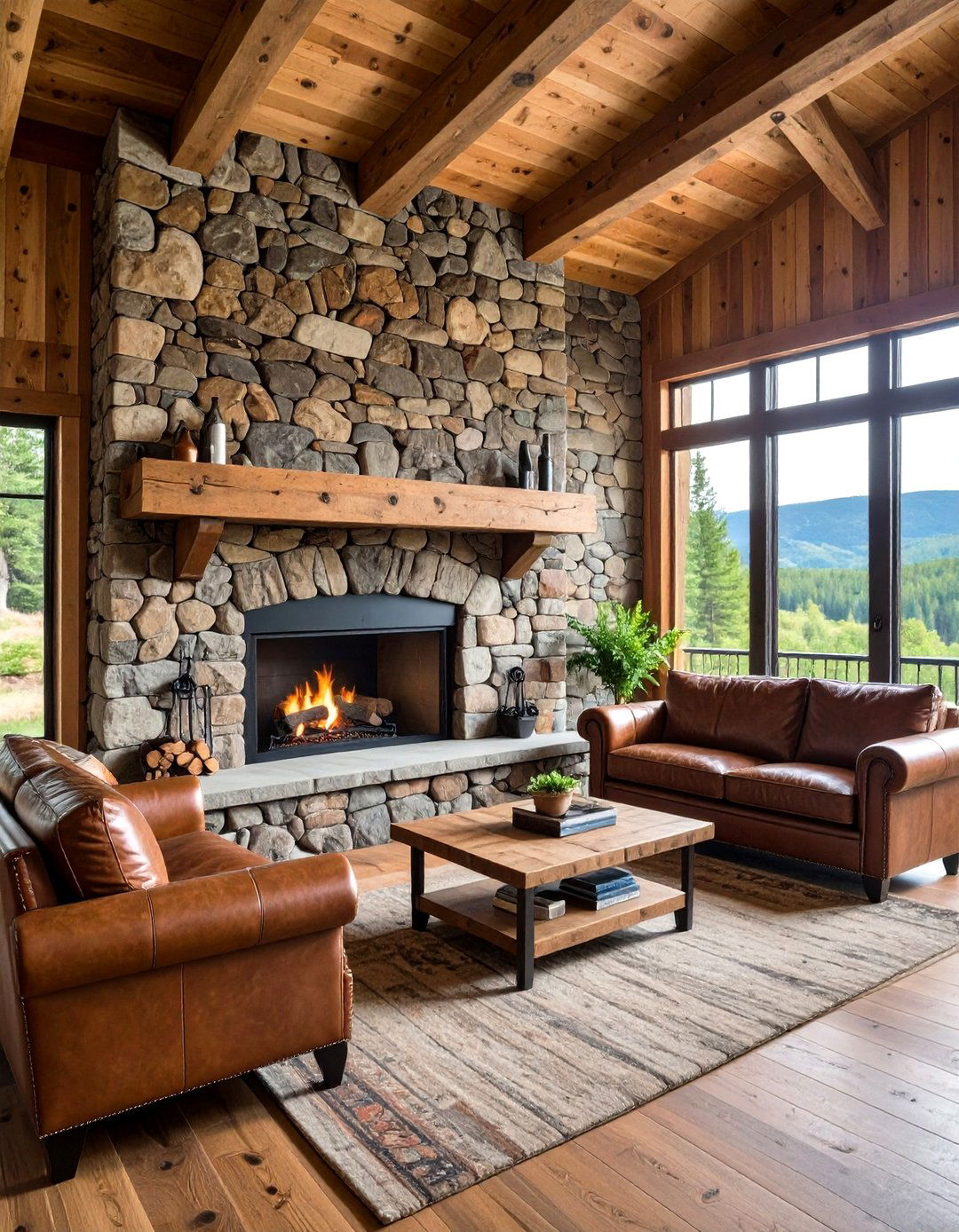
A rugged sweep of fieldstone powers instant lodge energy, letting the stone fireplace become the room’s rugged backbone. Natural variation in shape and color adds movement as pieces climb uninterrupted to the ceiling, echoing mountains outside and disguising high walls that might otherwise feel empty. Tucking a chunky reclaimed-wood mantel halfway up keeps scale human while protecting views of the highest stones. Fieldstone’s dense mass also stores heat, releasing it slowly after the flames fade—ideal for drafty great rooms. Designers note it pairs beautifully with iron strap accents and leather furniture for that modern-rustic mix homeowners crave today.
2. Sleek Limestone Slab Minimalist
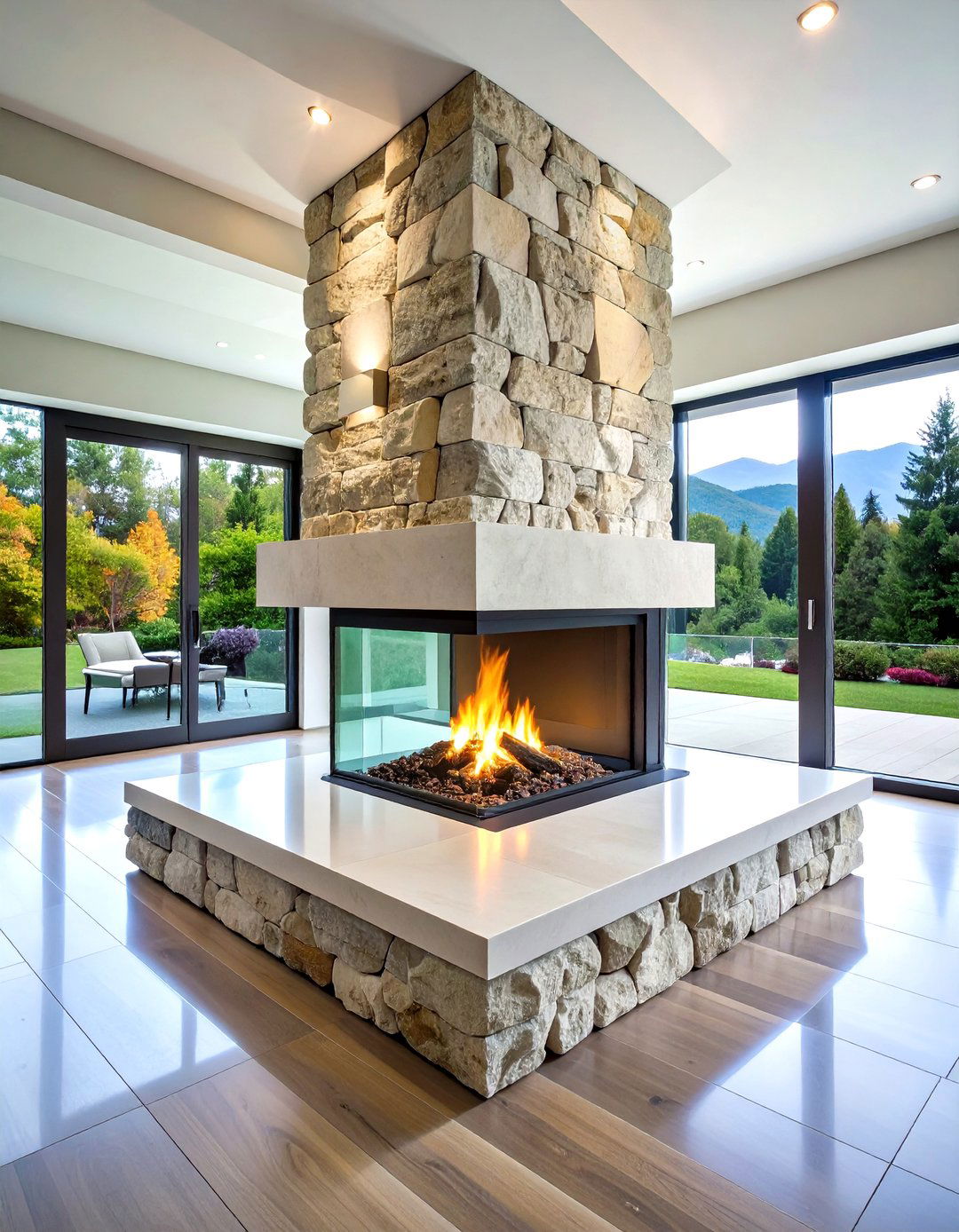
Unlike rugged rubble, a monolithic limestone-slab surround delivers gallery-like calm. Large-format pieces minimize grout lines so the stone fireplace reads as one elegant canvas, perfect for minimalist or Japandi interiors. Pale cream or warm greige tones bounce light deep into open plans while subtle fossils add quiet intrigue up close. Limestone’s relatively soft composition makes precise mitered corners achievable, sharpening the vertical reveal. Pair with a floating hearth in the same stone so flames seem carved from solid earth, then finish the column with frameless glass to amplify height without extra ornament.
3. Dramatic Stacked Slate Tower
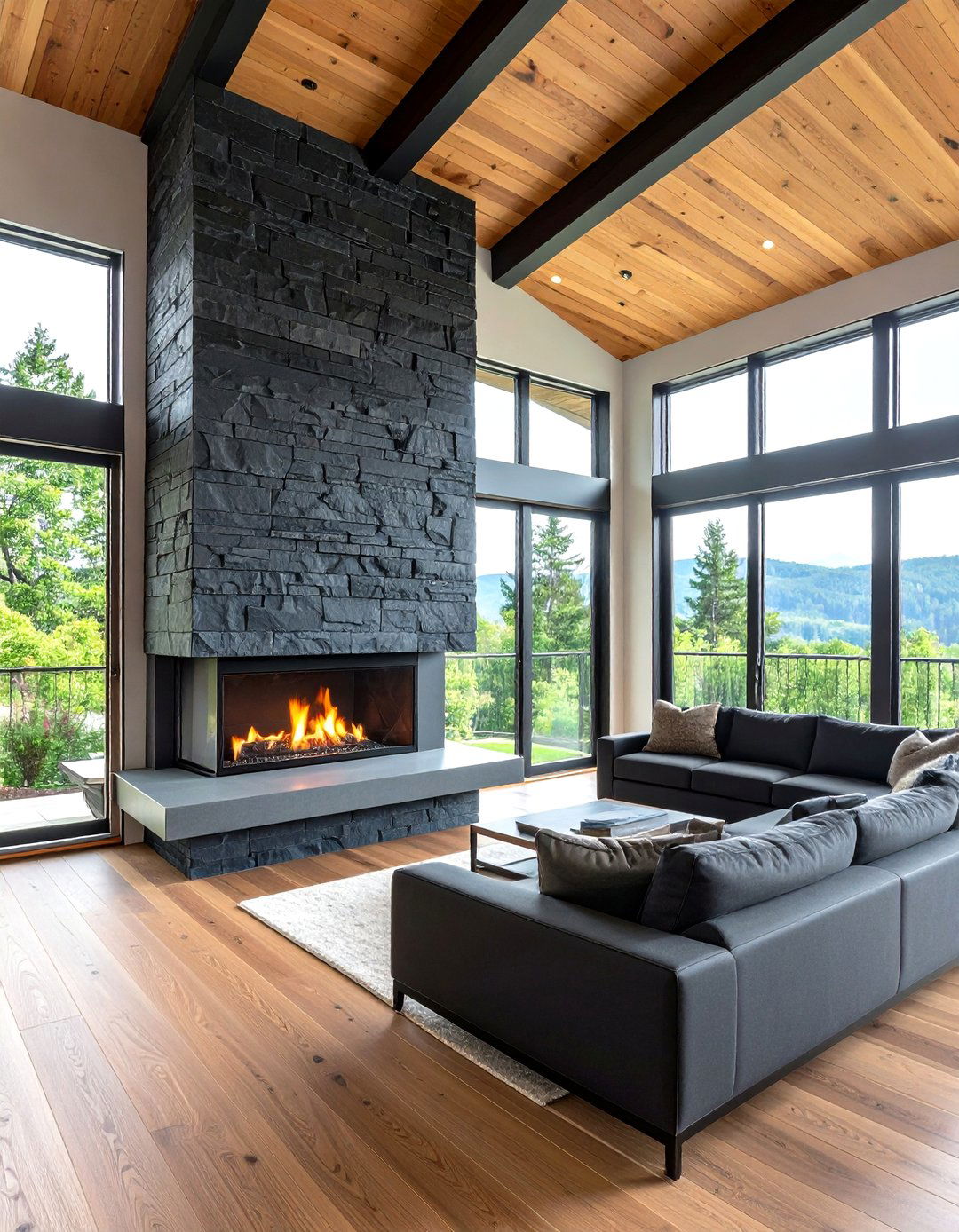
A stack-bond of slim charcoal slate strips gives the stone fireplace skyscraper swagger inside a double-height living room. The long, linear pieces run horizontally, but their sheer number emphasizes vertical ascent, especially when the stack continues right through the clerestory windows. Designers recommend extending slate to the ceiling ridge so the texture draws eyes upward, making even modest rooms feel grand. Charcoal tones ground paler walls, while slate’s layered surface hides soot. Bonus: slate’s fire-resistance rating means no additional non-combustible sheathing is required behind many gas inserts—saving cost and inches.
4. Two-Tone Granite and Timber Contrast
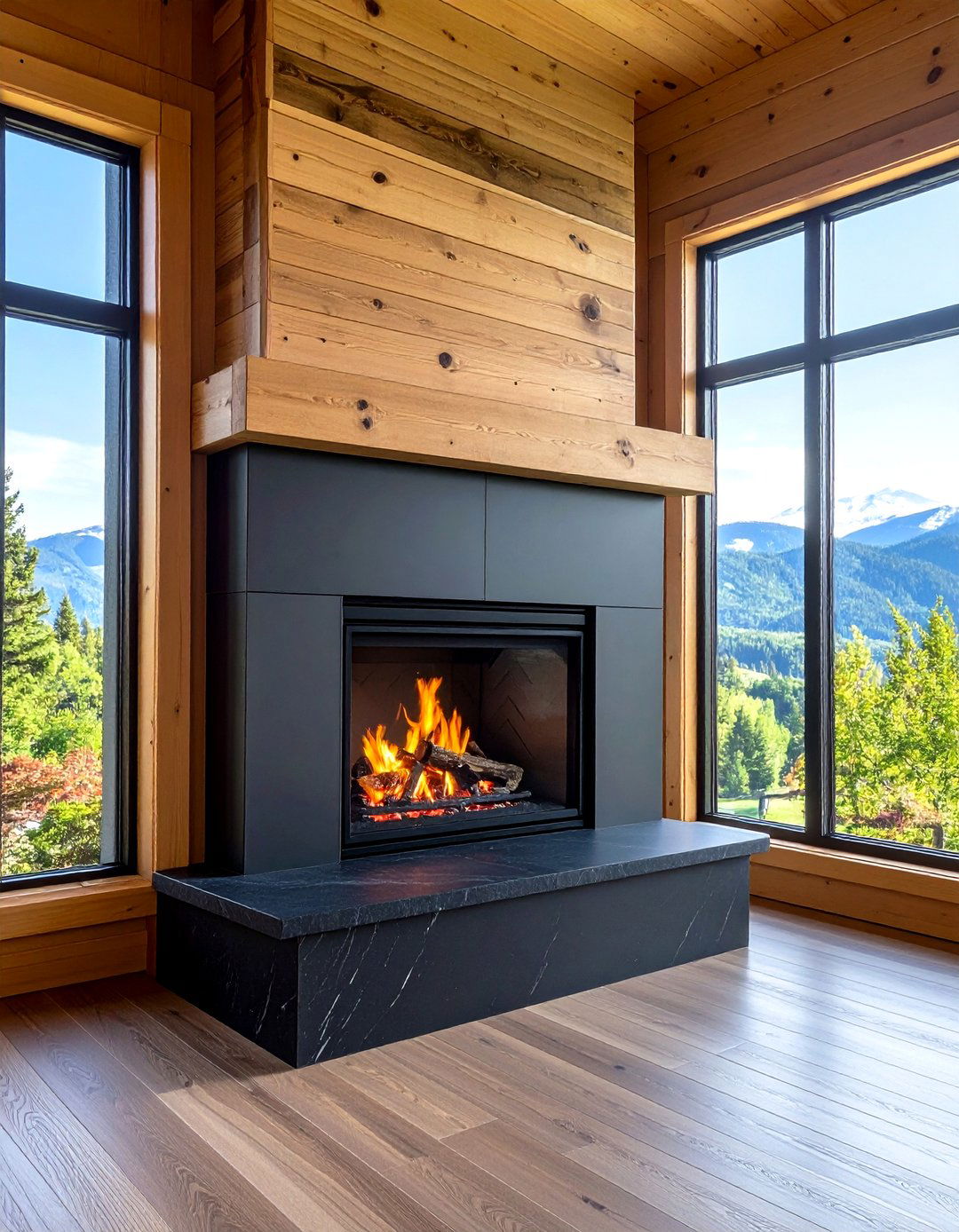
Consider pairing polished jet-black granite around the firebox with rough-sawn cedar above; the material switch midway lets a stone fireplace celebrate contrast without visual clutter. Granite’s durability shields the hottest zone, while warm timber lightens the upper reach so the mass doesn’t feel heavy. A subtle picture-frame reveal where the two meet creates a crisp datum line echoing chair-rail height elsewhere. Because granite slabs can be book-matched, flames reflect off mirrored veining, multiplying their sparkle at night. The layered palette harmonizes with Scandinavian and mountain-modern schemes alike.
5. Modern Linear Gas with Stone Veneer
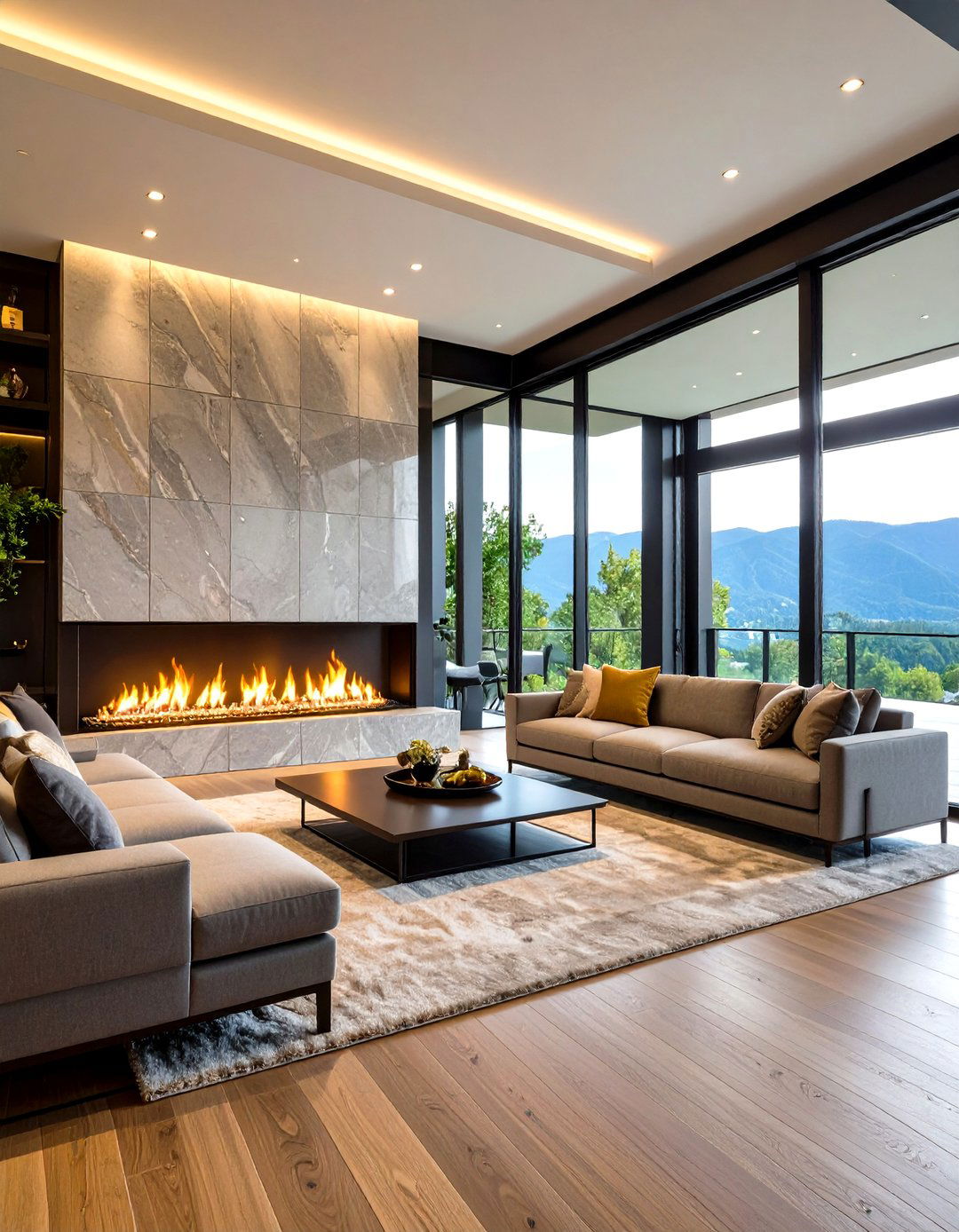
For contemporary lofts, a ribbon-like gas insert set low along a floor-to-ceiling stone veneer wall delivers drama without bulk. Thin-cut quartzite panels keep the stone fireplace under structural load limits while providing authentic texture. Bordering the insert with minimalist black steel underscores the line, and continuing stone beyond the firebox height prevents the long opening from looking lost in the void. Home-automation–ready modules now sync flame height with mood lighting—another nod to 2025’s smart-home expectations.
6. See-Through Double-Sided Stone Divider
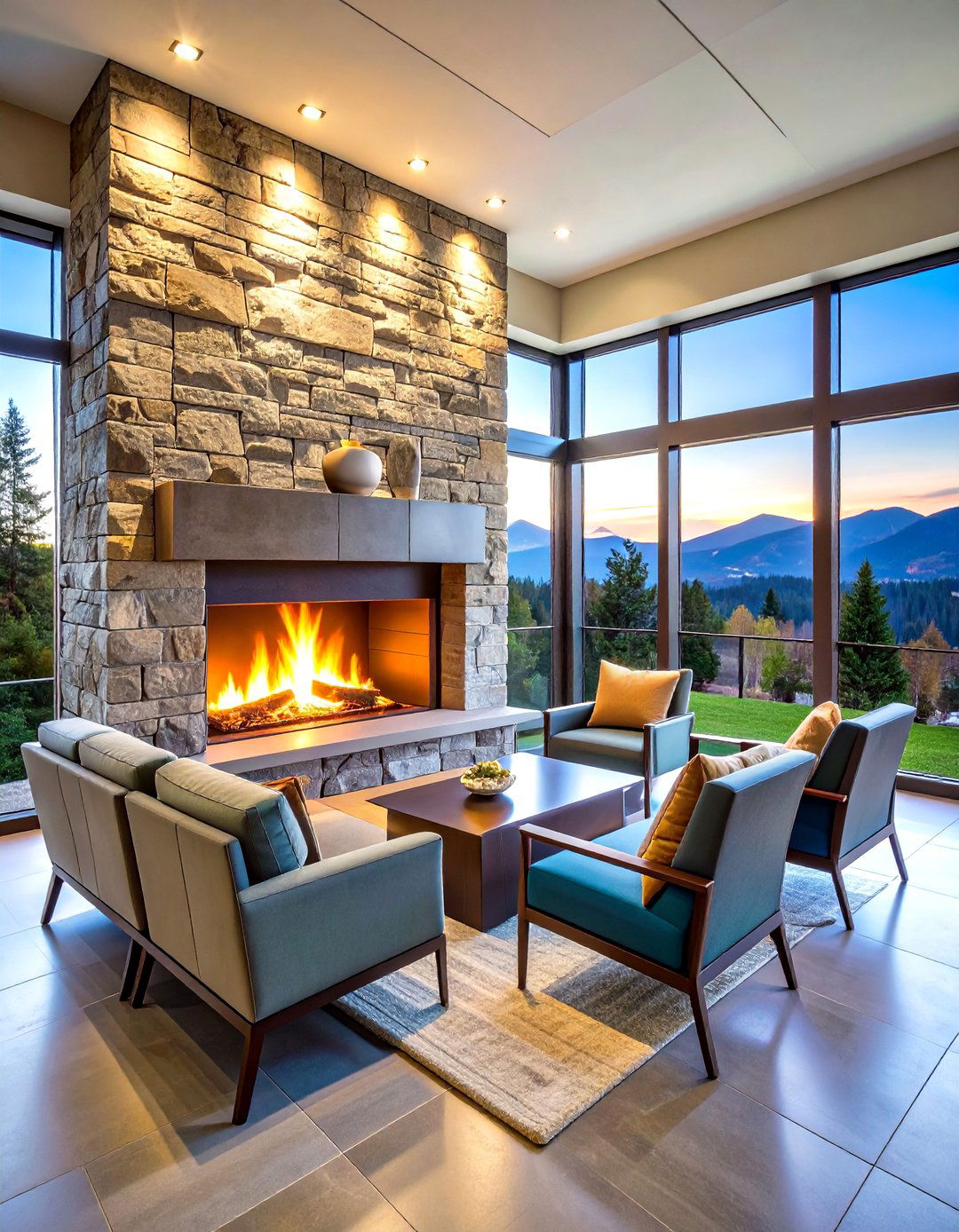
A two-sided design transforms a stone fireplace into a translucent room divider, feeding adjacent zones with flickering light. Slim steel flitch plates concealed within stacked stone support the weight so the pillar can stand free of conventional framing. Homeowners love peeking through flames to conversations on the other side during gatherings. Because the firebox vents vertically, stone can rise cleanly to the ceiling with no offset chase. Matching stone on both faces maintains coherence even when furniture styles differ between rooms.
7. Reclaimed Stone Eco Showcase
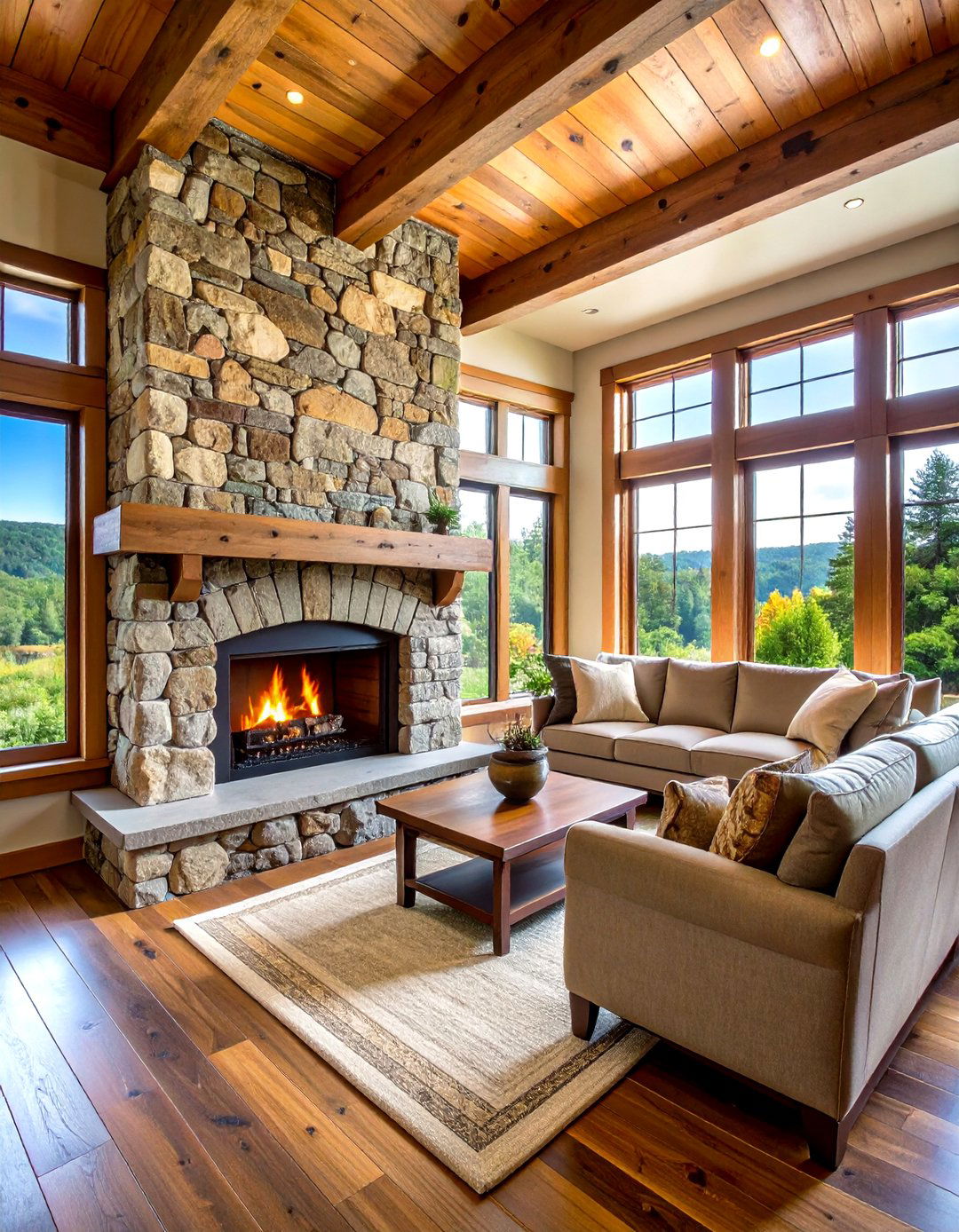
Owing to growing eco-mindfulness, salvaged barn foundation blocks or old cobblestones now headline many floor-spanning stone fireplace builds. Each piece arrives pre-weathered, gifting patina impossible to fake while slashing quarry demand and transport emissions. Builders recommend a wire-brush sweep only—no acid wash—so lichens and mineral stains survive, telling the stone’s story. Stagger courses randomly for an authentically aged silhouette, and fill wide joints with lime mortar that can breathe, preventing cracks as the reclaimed stone equalizes with interior humidity.
8. Back-Lit Onyx Feature Wall
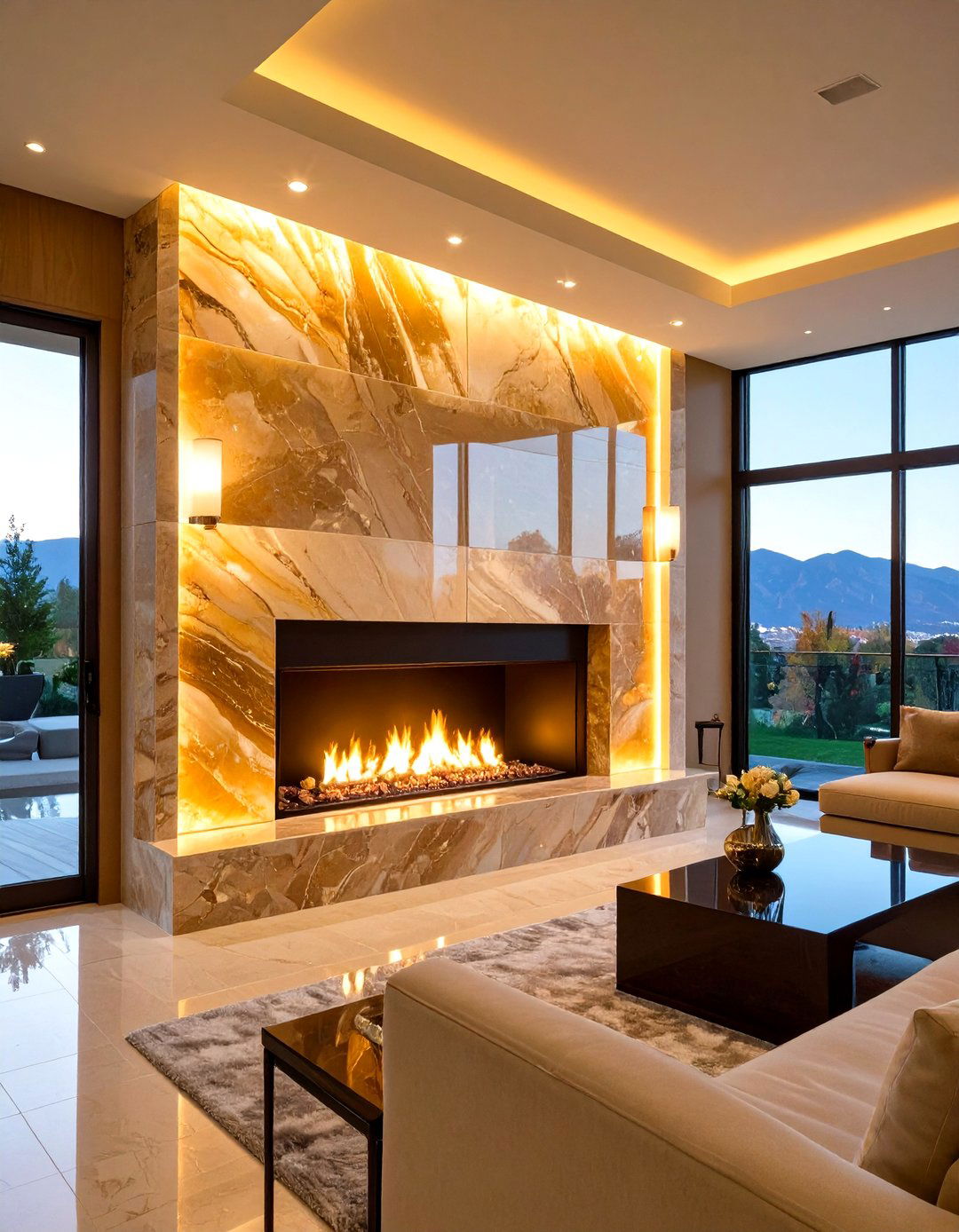
For a high-glam statement, translucent honey onyx cut into giant panels turns a vertical stone fireplace into a glowing lantern once LED strips are set behind. Fire dances in front while gentle back-lighting seeps through veining for a layered light show. Integrators suggest RGB-capable LEDs so the column shifts from warm candle hues at night to cool daylight when the fire is off. Ensure ventilation channels remain between LEDs and masonry to dissipate heat. Because natural onyx scores lower on hardness, installers back the stone with tempered glass for rigidity before hoisting panels into place.
9. Thin Stone Veneer Budget Saver
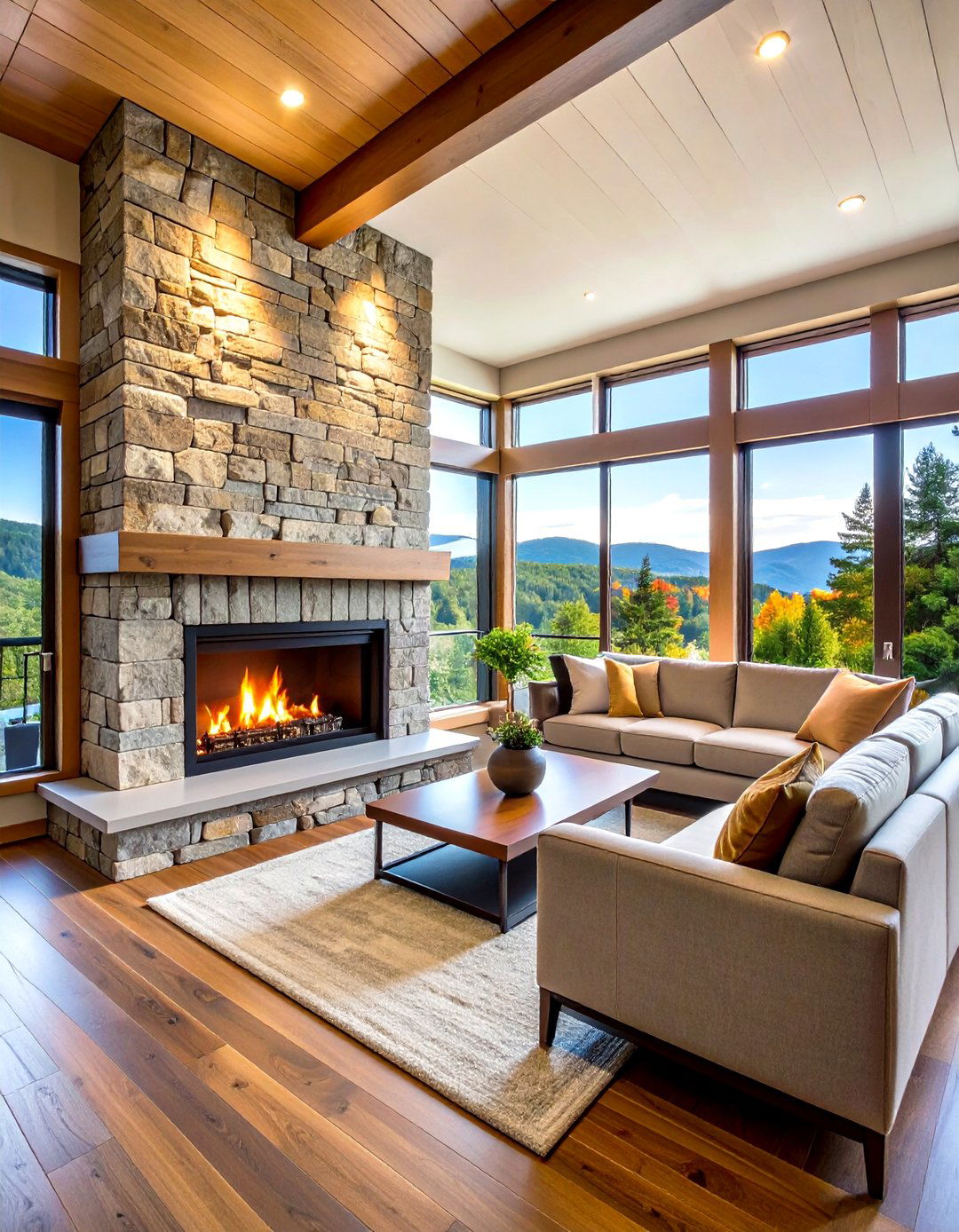
Homeowners chasing the look without structural reinforcement costs often specify thin-stone veneer, trimming wall load from hundreds to roughly fifty pounds per square metre. The result is a convincing stone fireplace that still stretches from floor plinth to tray ceiling. Veneer installs over standard metal lath and scratch coat, making it a realistic DIY weekend if you own a wet-saw. Manufacturers offer matching corner returns so edges read solid, fooling even practiced eyes. Less depth also creates room for recessed media niches or hidden wiring behind the cladding.
10. French-Style Limestone Classic

Carved pilasters, a generous entablature, and a break-front hearth channel châteaux grandeur when executed in creamy French limestone. Let the stone fireplace rise beyond the mantel into a tapered over-mantel that caps against a coffered ceiling—echoing 18th-century proportions while suiting today’s loftier heights. Shallow relief moldings maintain shadow play without busy ornament, and antique wax finishes deepen color. Such classical profiles pair well with herringbone firebox brick and aged brass lights, ensuring the fireplace reads as heirloom architecture even in new construction.
11. Black Marble Monolith
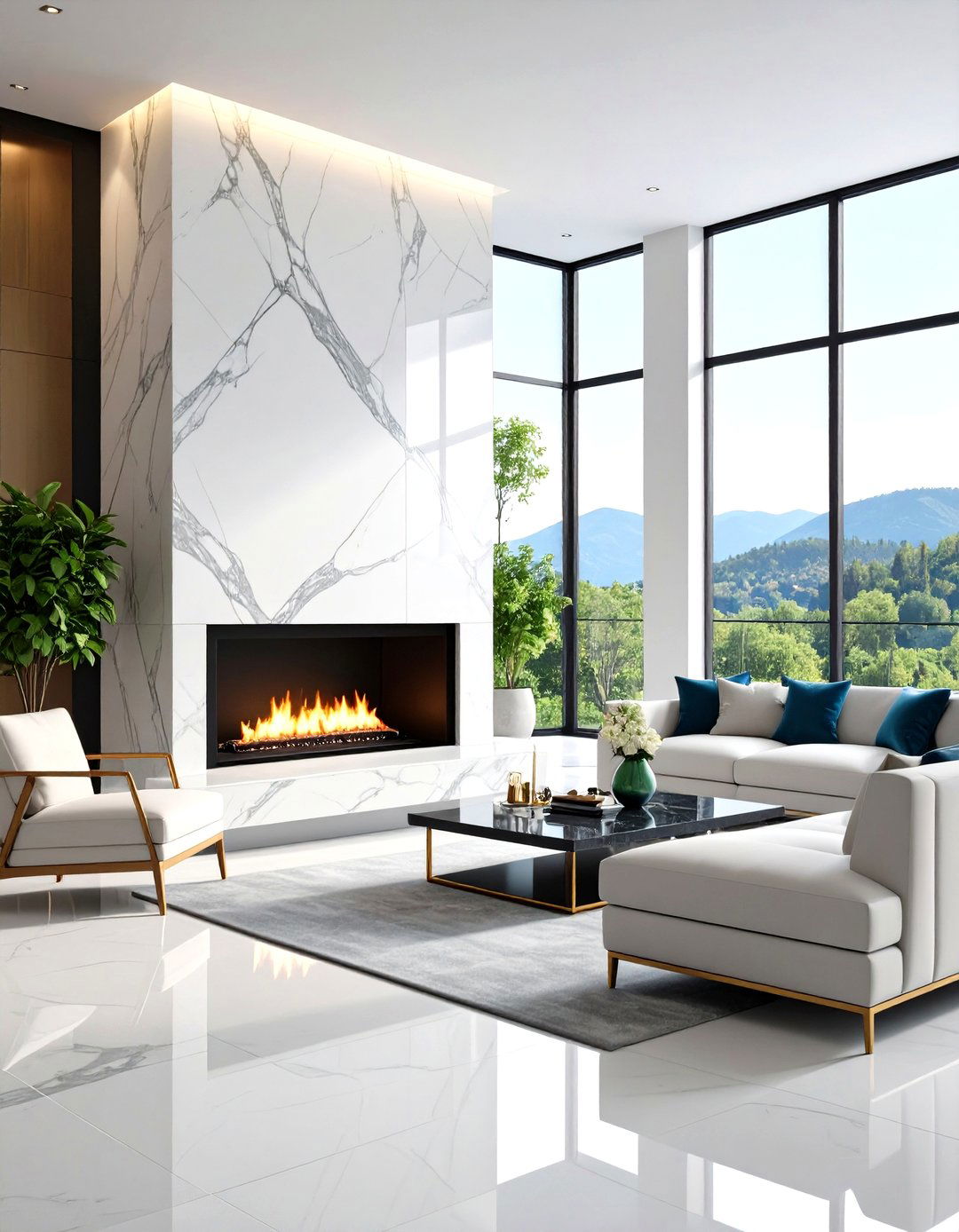
Veined Nero Marquina marble slabs deliver bold sophistication when allowed to run floor-to-ceiling with no visible joints. Flames pop against inky depth, and white veining draws the eye up, emphasizing the stone fireplace height. Designers recommend a ¼-inch shadow reveal against adjacent drywall so the marble seems to float. Because marble conducts heat quickly, a thermostatic blower keeps temperatures balanced and prevents hotspots that could stress adhesive. The look excels in monochrome spaces—think matte-black window frames, charcoal sofas, and brushed-nickel sconces—where contrast is king.
12. River Rock Lodge Ambience

Rounded river stones supply campfire nostalgia while their smooth contours soften towering walls. A stone fireplace surfaced in mixed diameters prevents a bowling-alley feel, and strategic use of larger boulders near the base grounds the column visually. Mortar dyed a shade darker than the stones lets individual colors sing rather than creating a polka-dot grid. Add built-in log storage nooks between rocks to break the expanse and celebrate the hearth’s purpose. Exterior-rated sealant ensures the porous stones don’t wick soot or stains over time.
13. Flagstone Farmhouse Hearth

Wide, irregular flagstone slabs stepping their way up a shiplap-clad gable wall create a relaxed farmhouse note. The stone fireplace feels handcrafted, especially when mortar joints are gently raked back for depth. Designers often leave a gap behind the top stones so sconces can wash light down the textured surface, boosting evening coziness. Flagstone’s earthy browns harmonize with reclaimed oak beams and simple rush-seat chairs, making the assembly ideal for family rooms where patina is welcome.
14. Quartzite Contemporary Column
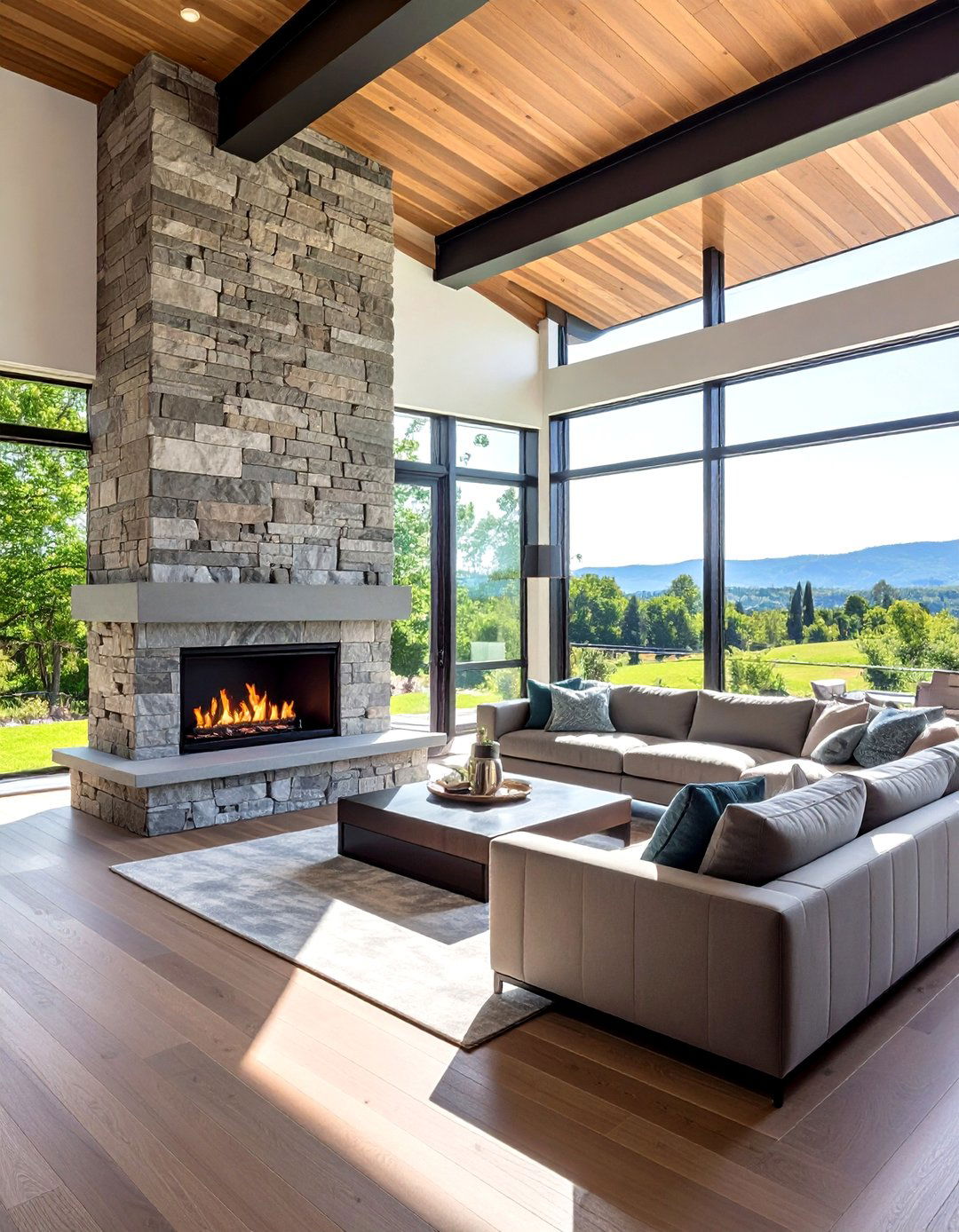
Hard-wearing quartzite offers shimmering mica flecks that sparkle under down-lights, giving a vertical stone fireplace subtle glamour. Neutral silver-grey planks stack open-joint for shadow lines that echo concrete architecture yet feel warmer. Because quartzite rates high on the Mohs scale, it resists scratches from fireplace tools—a plus in busy households. A flush steel lintel at the firebox supports the heavy courses, maintaining the clean planes prized in contemporary design.
15. Integrated Shelving Flanks
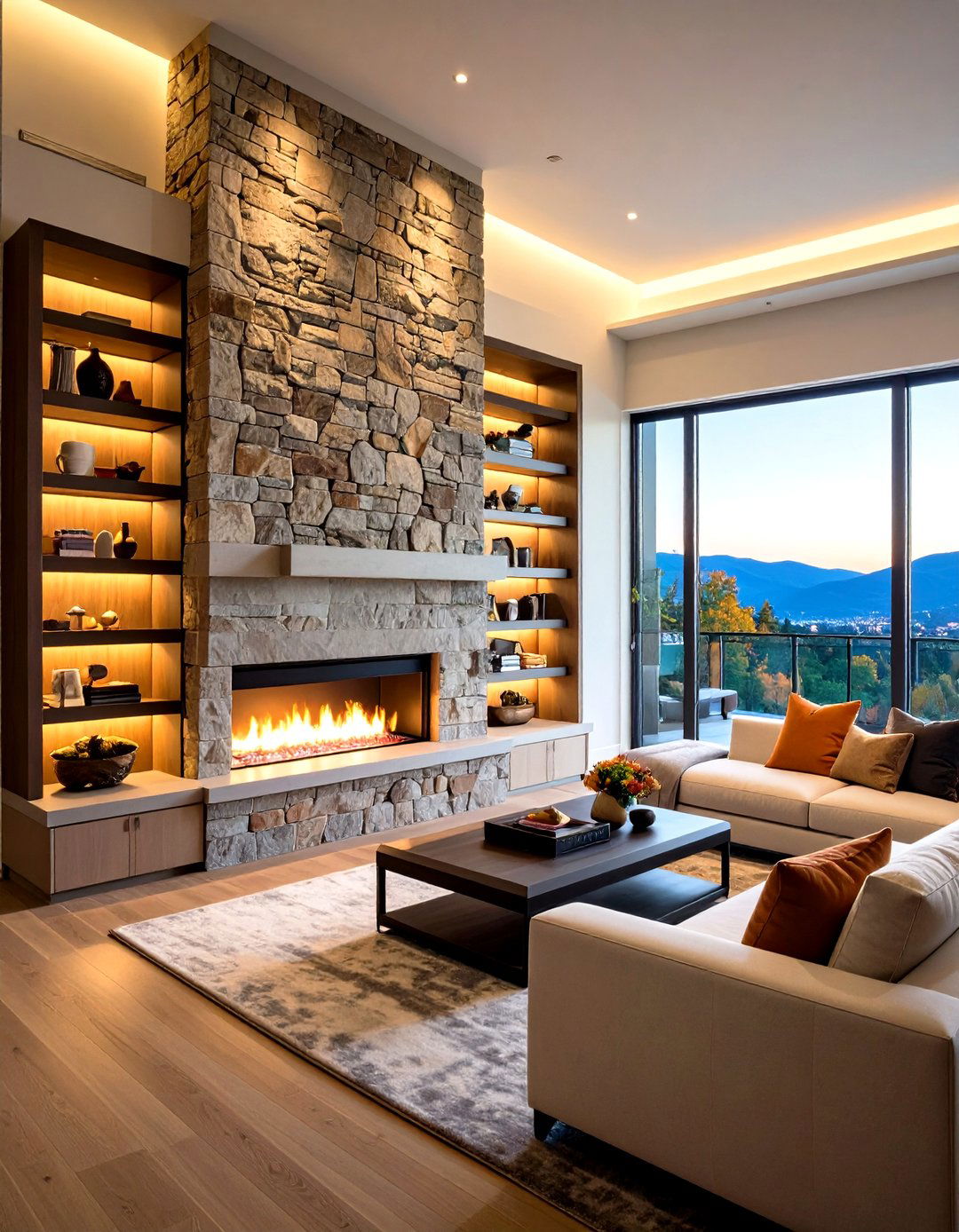
Built-ins flanking a floor-to-ceiling stone fireplace balance its mass while delivering storage for books, art, and media. Designers set the shelves slightly shallower than the stone to let texture protrude, creating depth. Painted cabinetry can match wall color so the stone remains centerpiece, or choose stained walnut for rich contrast. Hidden LED strips under shelves echo firelight and showcase décor after the embers die down. Remember to insulate between chase and cabinets to protect valuables from prolonged heat.
16. Cantilevered Stone Hearth with Hidden TV
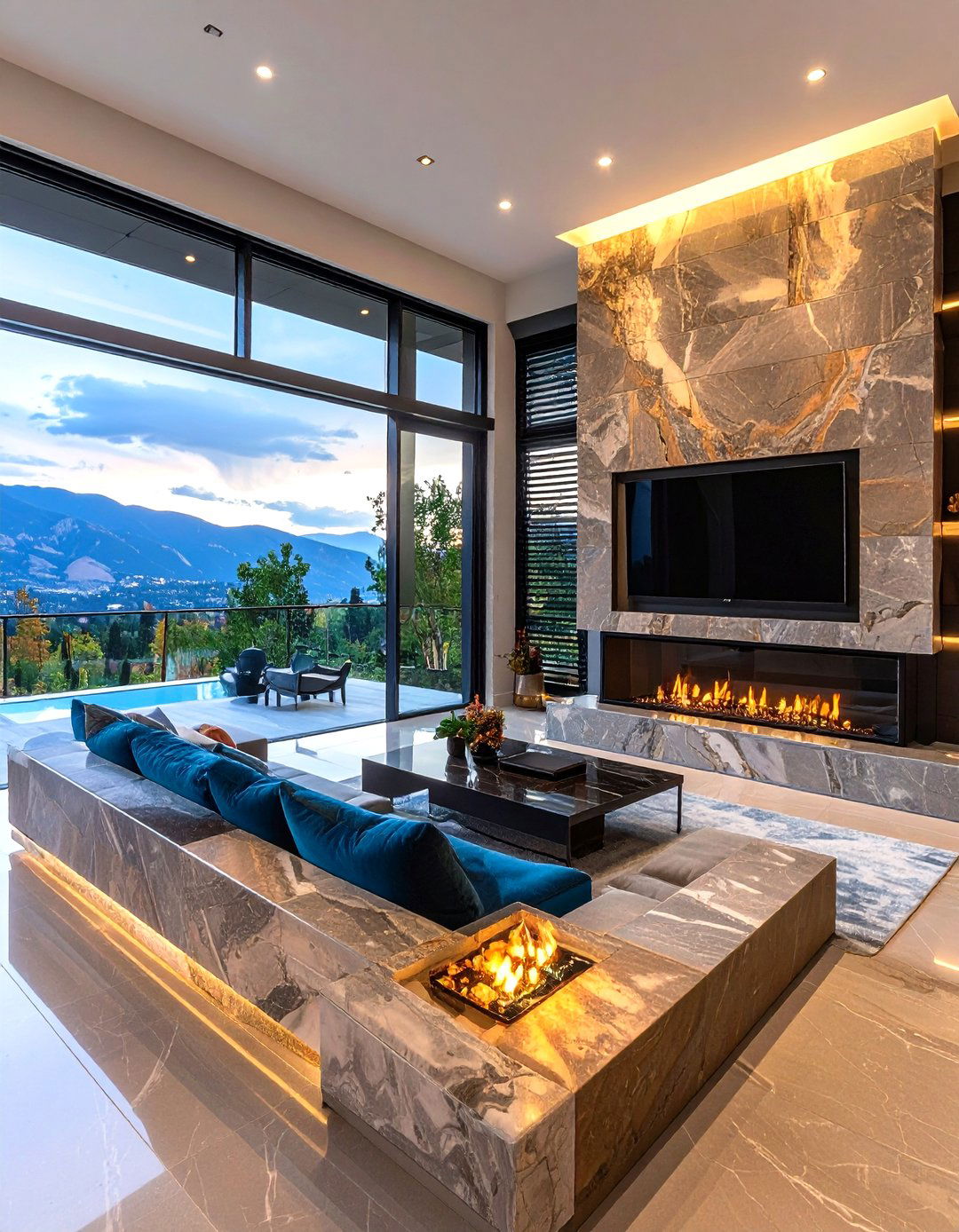
Homeowners wary of “black box” TVs above mantels can recess a lift behind the upper stone fireplace plane. When lowered, the marble-clad slab appears seamless; at movie time, the screen glides forward. A cantilevered hearth slab jutting twelve inches adds modern sculptural drama while supplying seating. Steel brackets embedded in masonry distribute load, removing the need for visible supports. Designers caution to vent electronics through side louvers disguised as shadow gaps to avoid overheating.
17. Sculptural Cast-Stone Mantel
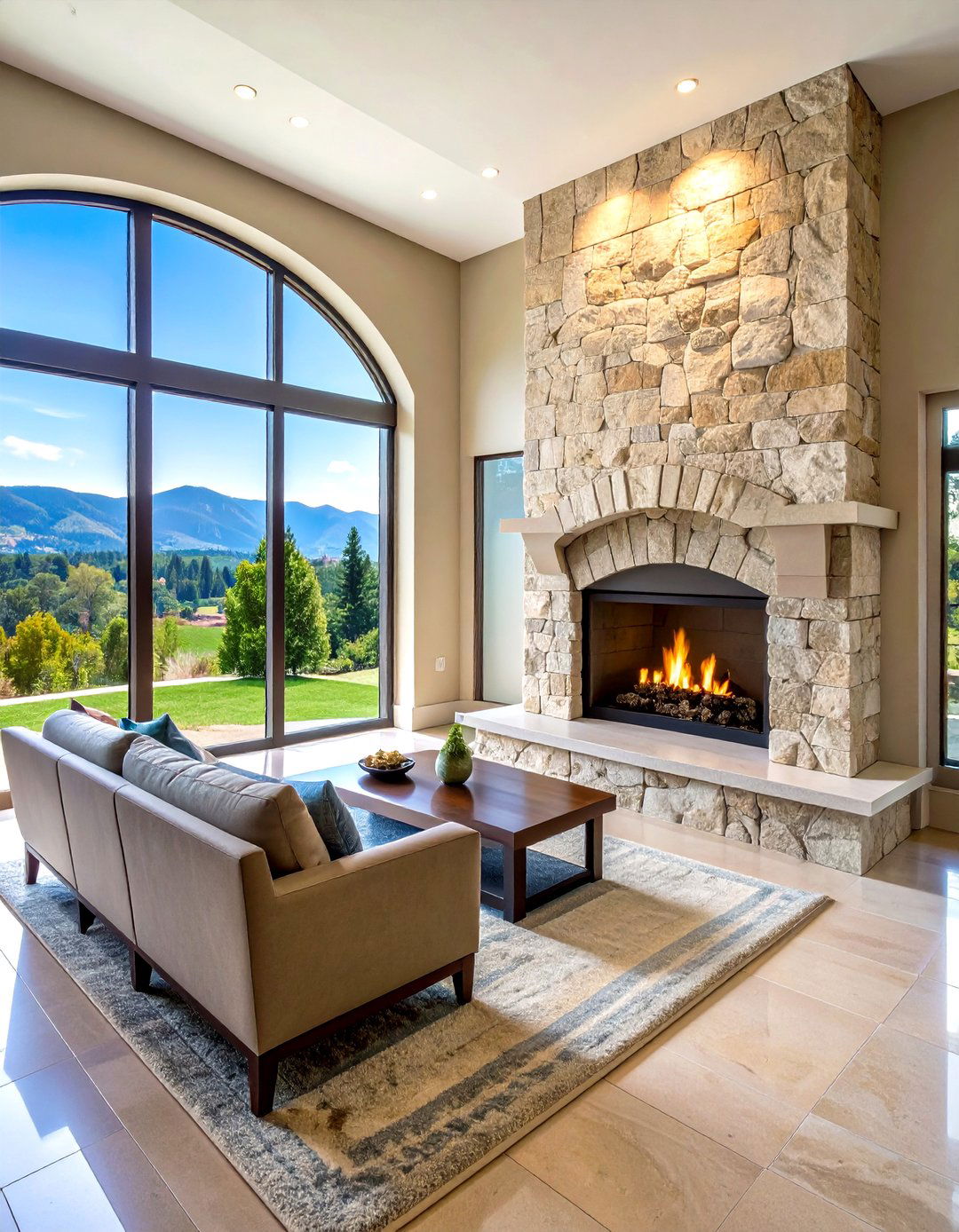
Cast-stone technology lets artisans pour custom profiles—arches, corbels, or wave-edged surrounds—then stack modules upward for a bespoke floor-to-ceiling stone fireplace. Because cast stone uses recycled aggregates, it checks sustainability boxes while remaining lighter than quarried blocks, easing installation on upper floors. Pigments integrate through the mix, so chips won’t reveal stark white cores. Textures range from honed to travertine-like pitting, offering broad stylistic reach from Tuscan to ultra-modern.
18. Outdoor-Indoor Continuous Stone Wall
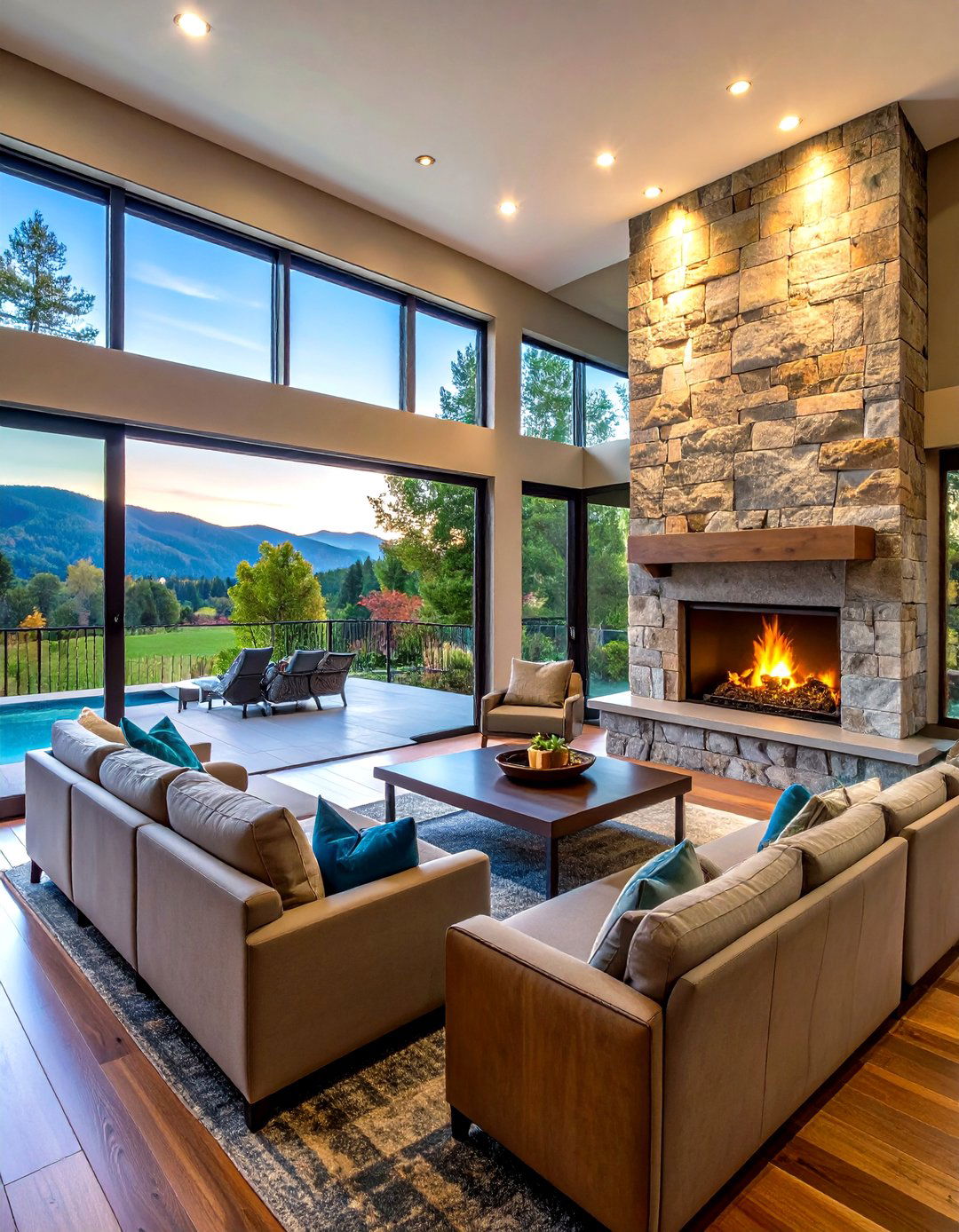
Sliding glass pockets now make it possible to run a single stone fireplace wall from interior great room through to covered patio, uniting spaces visually. Use weather-resistant granite or quartzite so the exterior half shrugs off freeze-thaw cycles. A sealed-combustion gas insert ensures performance regardless of outdoor winds, while a second firebox on the patio side can be wood-burning for campfire ambience. Continuing the stone makes seasonal living seamless—open doors in spring and flames seem to leap across thresholds.
19. Slim Vertical Niche Fireplace
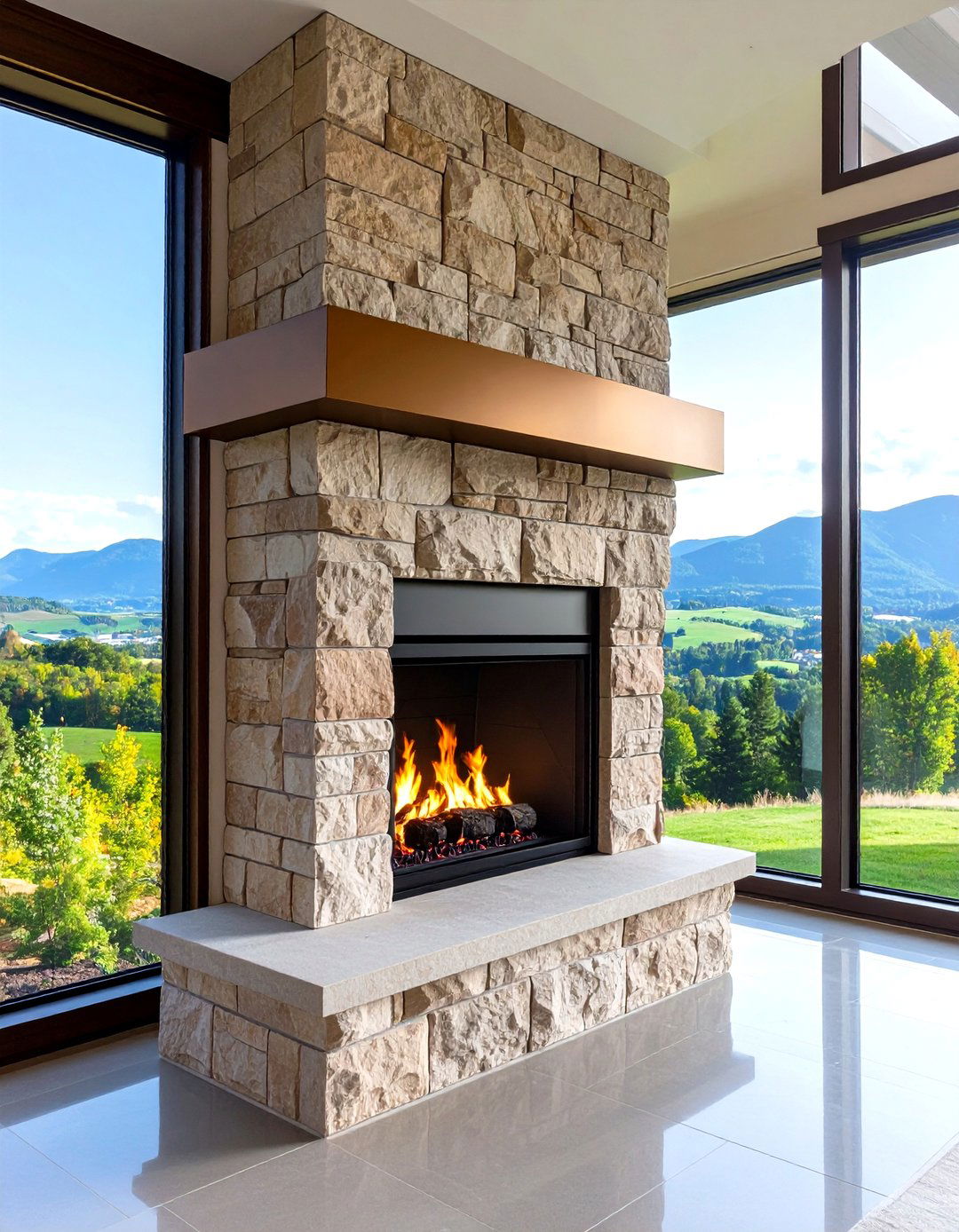
When floor area is tight, a pencil-wide stone fireplace sliced into a structural column delivers impact without stealing real estate. Tall, narrow fireboxes use less gas yet still stretch ten feet in height, emphasizing the room’s verticality. Thin-cut stone veneer supports the trend by hugging the column closely. Designers often add a bronze reveal around the niche as a heat break and accent. This format works especially well flanking panoramic windows where wide hearths won’t fit.
20. Mixed Slate Herringbone Pattern
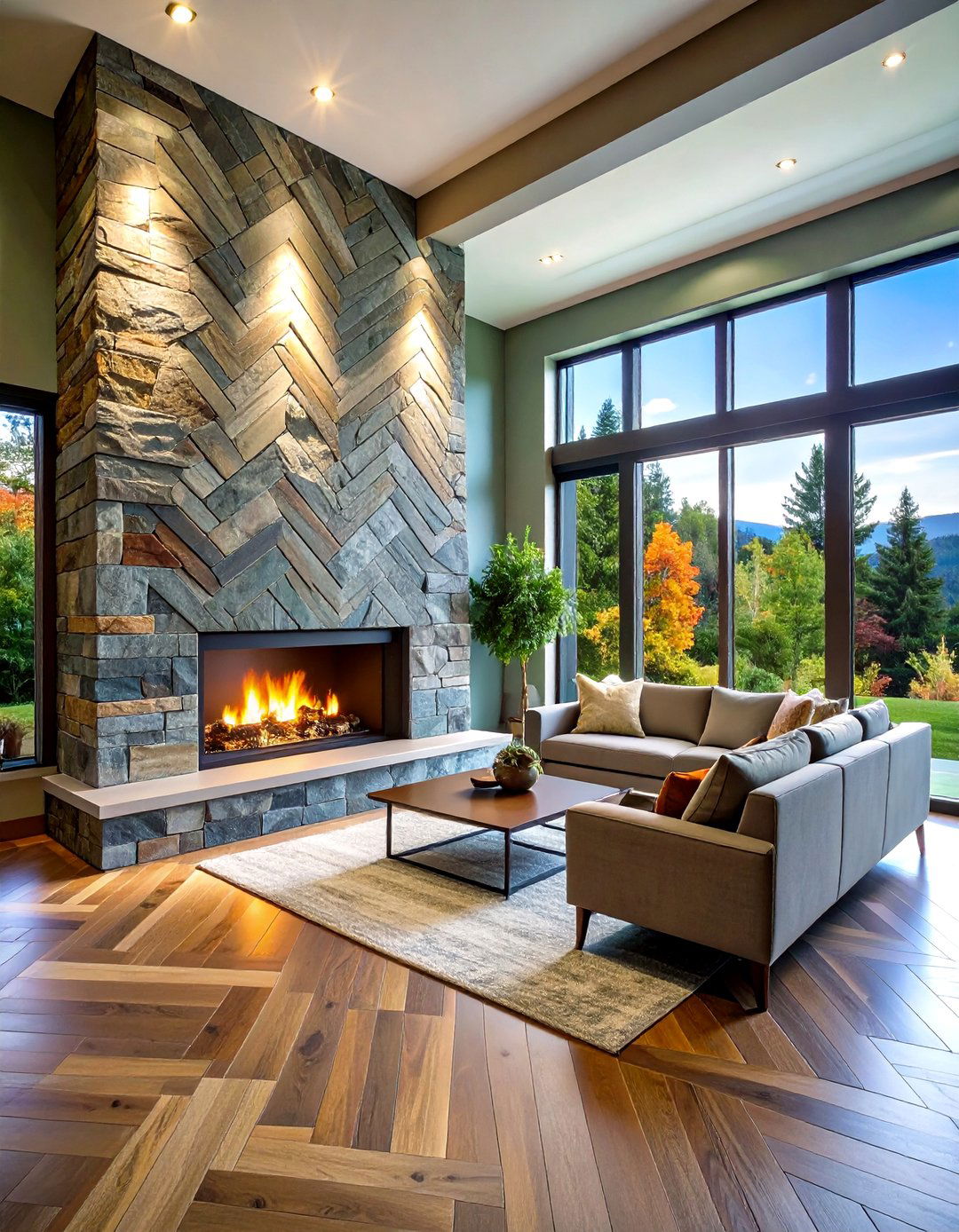
Finally, break the monotony of straight courses by laying multi-tonal slate strips in a giant herringbone up the wall. The zig-zag pattern injects movement so the stone fireplace feels dynamic even without flames. Slate tolerates angled cuts cleanly, allowing crisp chevrons, and its slip-resistant face makes scaffolding work safer during installation. Keep mortar thin and color-matched so the pattern reads uninterrupted, and consider discreet uplights at the base to cast dramatic shadows through the V-grooves.
Conclusion:
A floor-to-ceiling stone fireplace remains the ultimate architectural storyteller—equally at home in high-tech penthouses and rustic cabins. Whether you champion reclaimed rubble, embrace whisper-thin veneers, or splurge on back-lit onyx, the vertical sweep grounds soaring rooms, frames conversations, and projects a timeless sense of hearth. By blending smart planning—load calculations, heat management, sustainable sourcing—with creative detailing, you can shape a statement wall that glows long after trends fade.


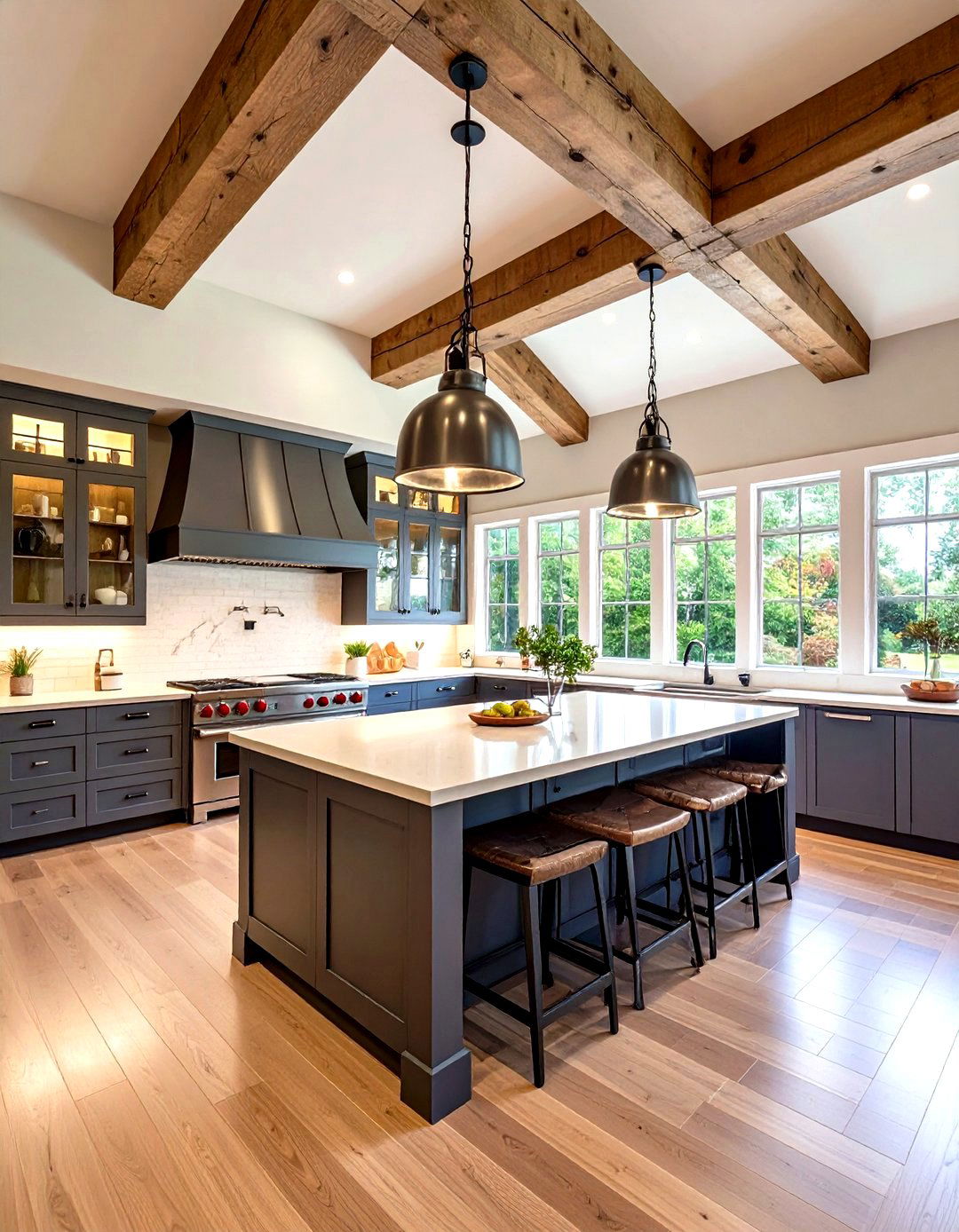

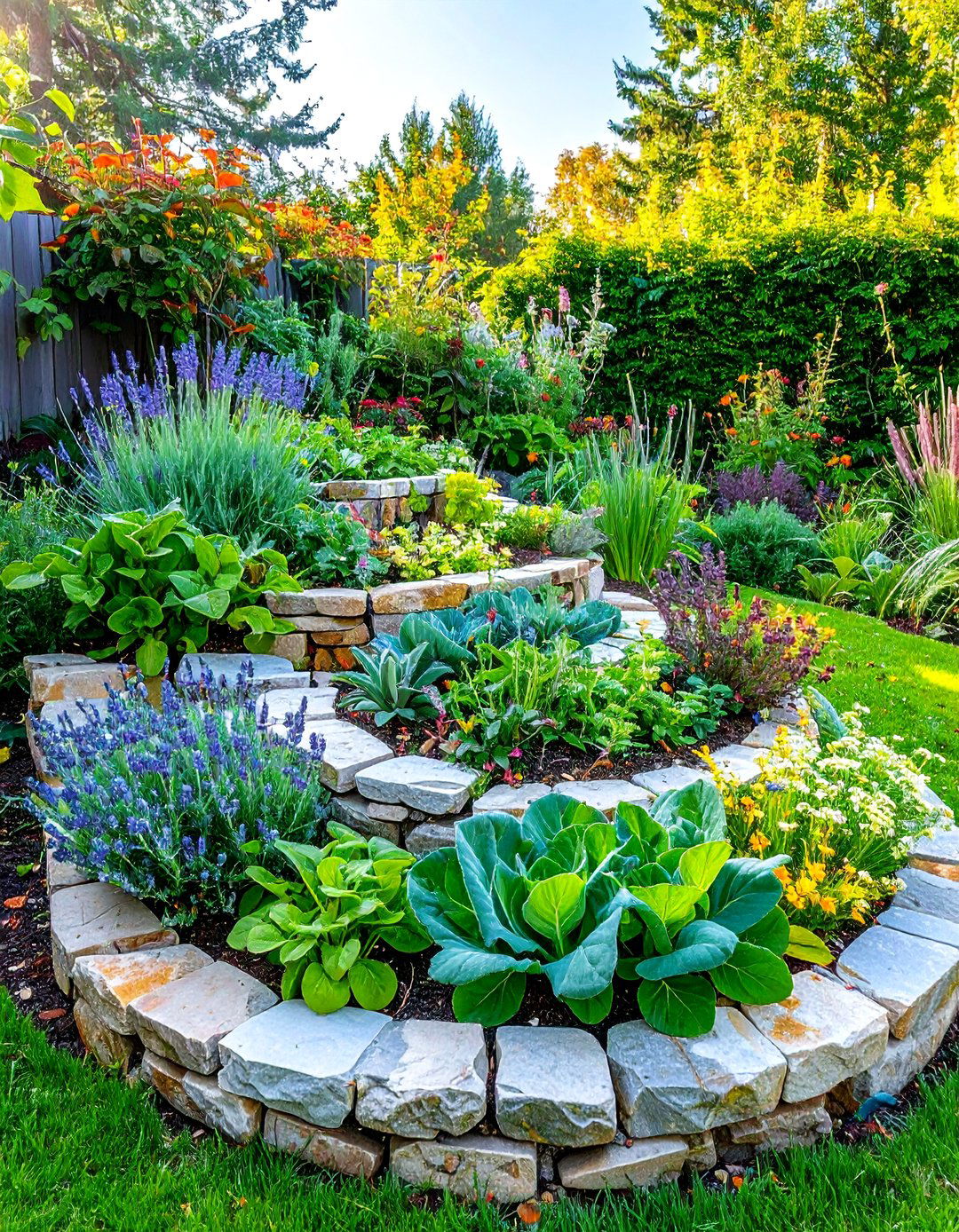
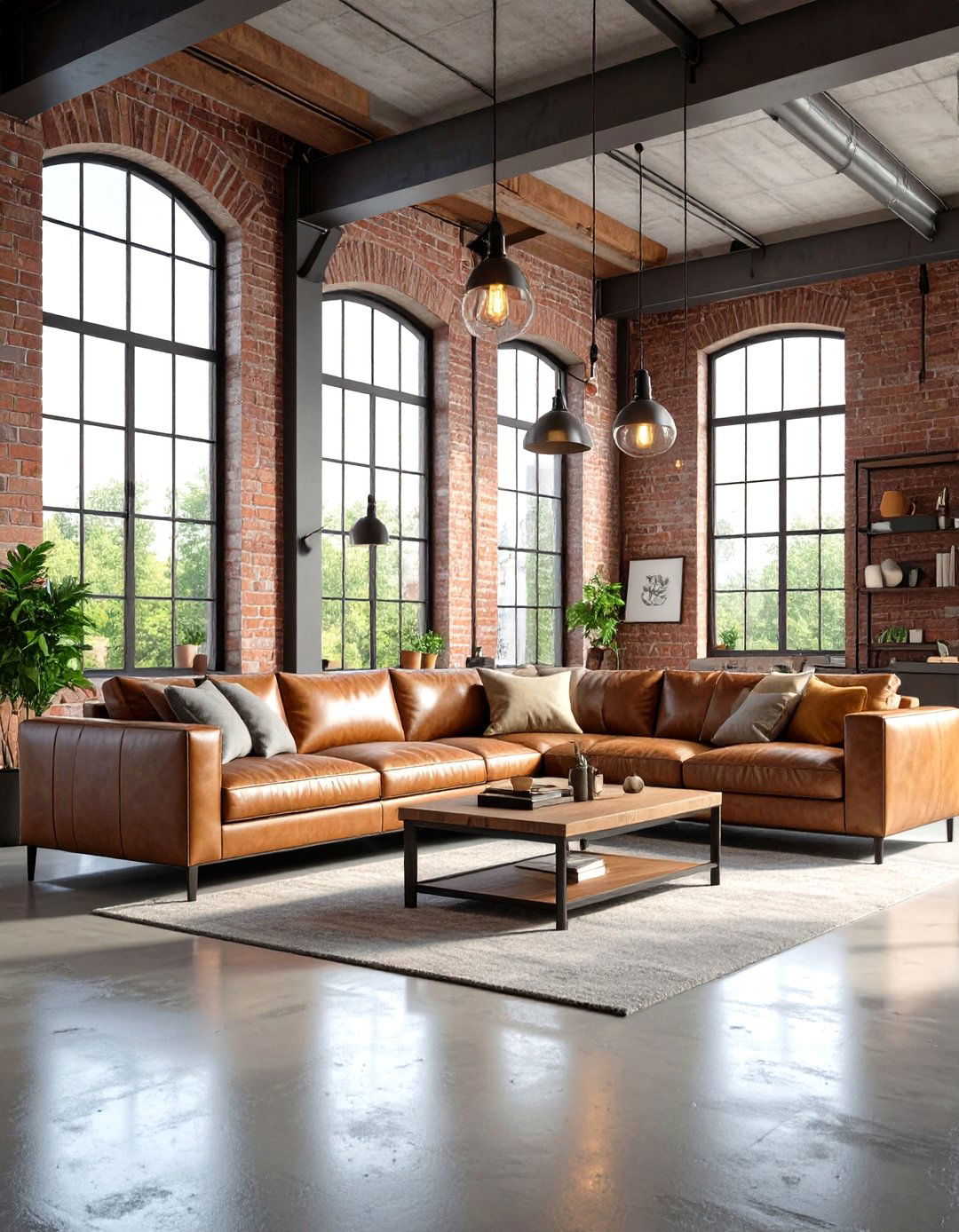


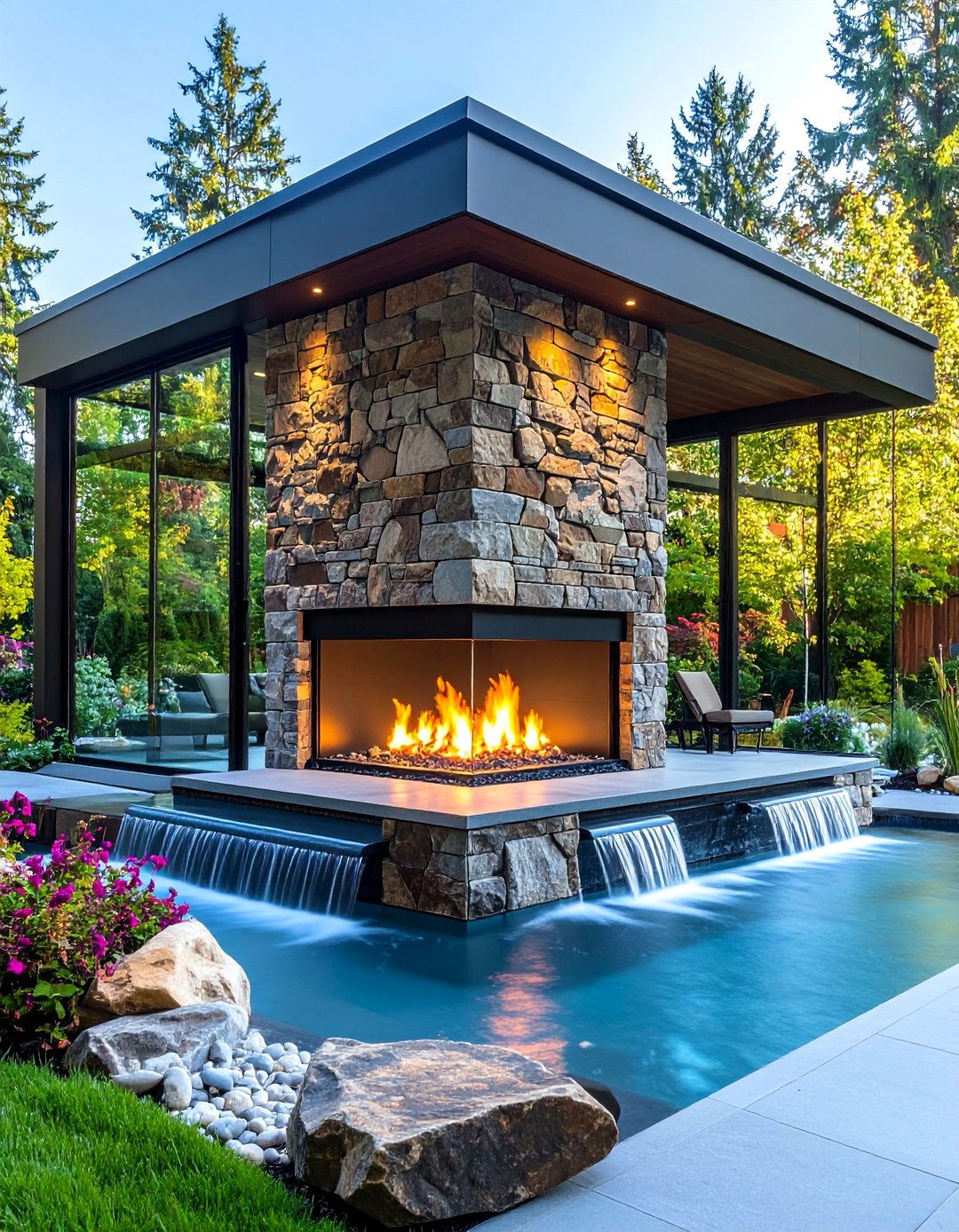
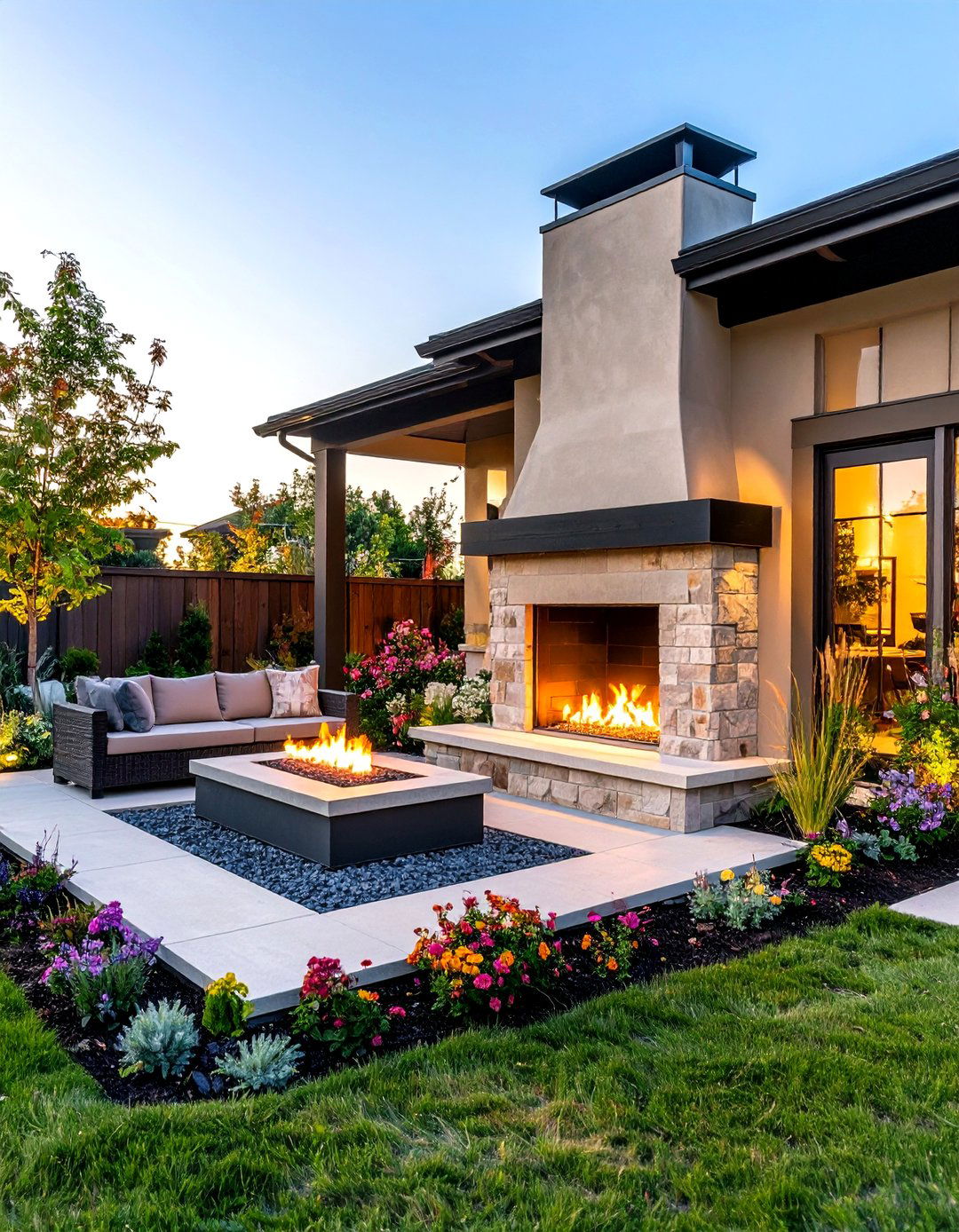
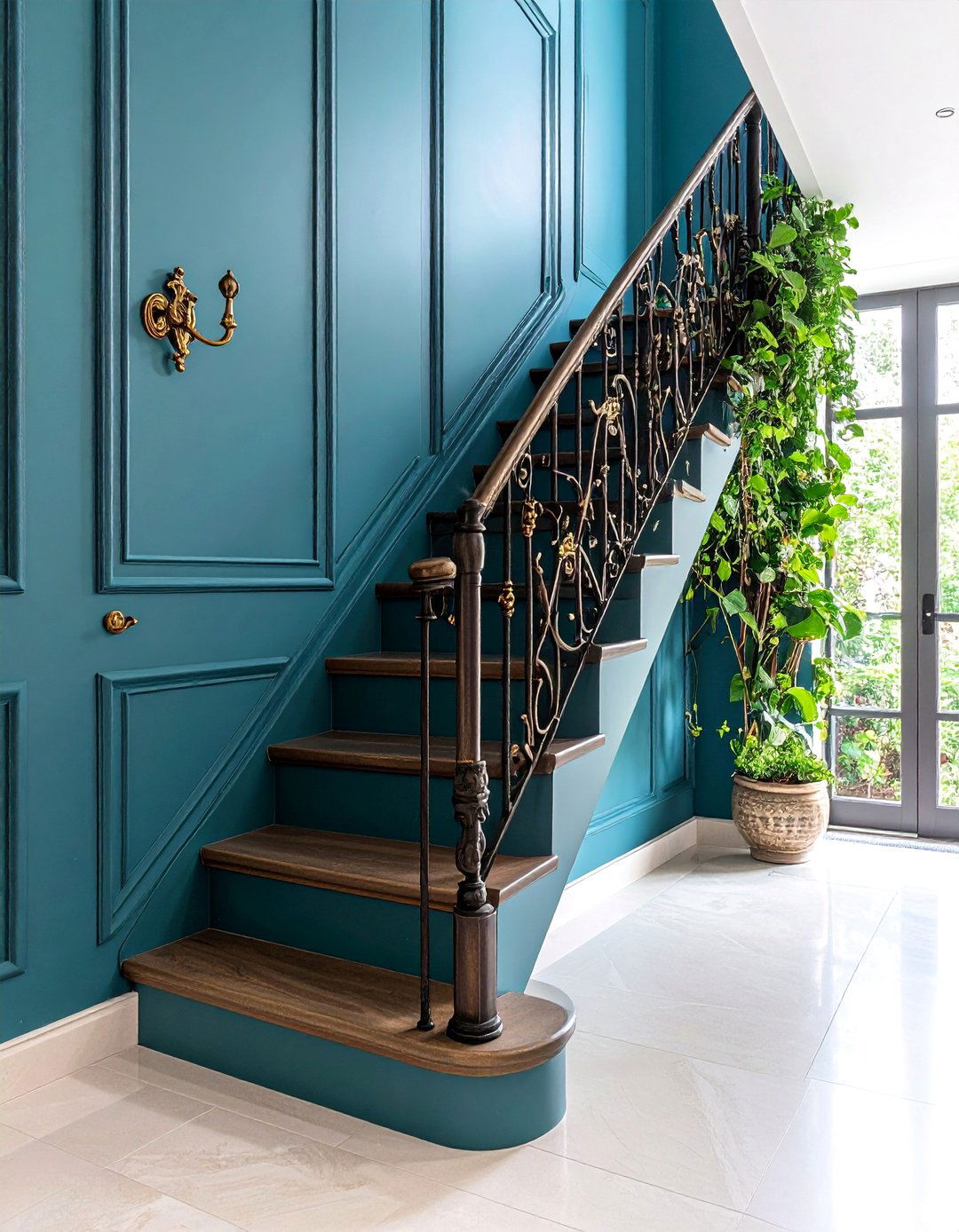
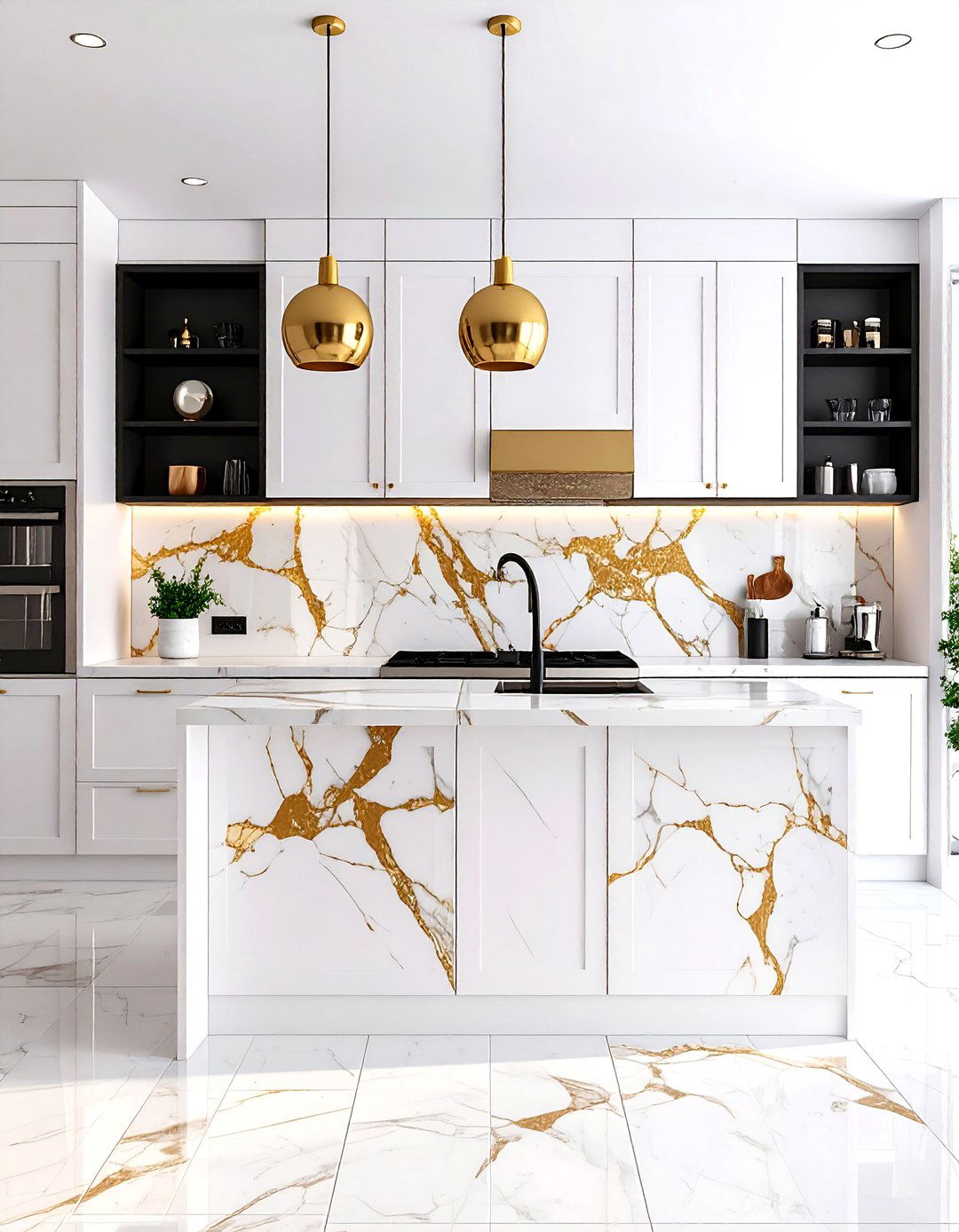

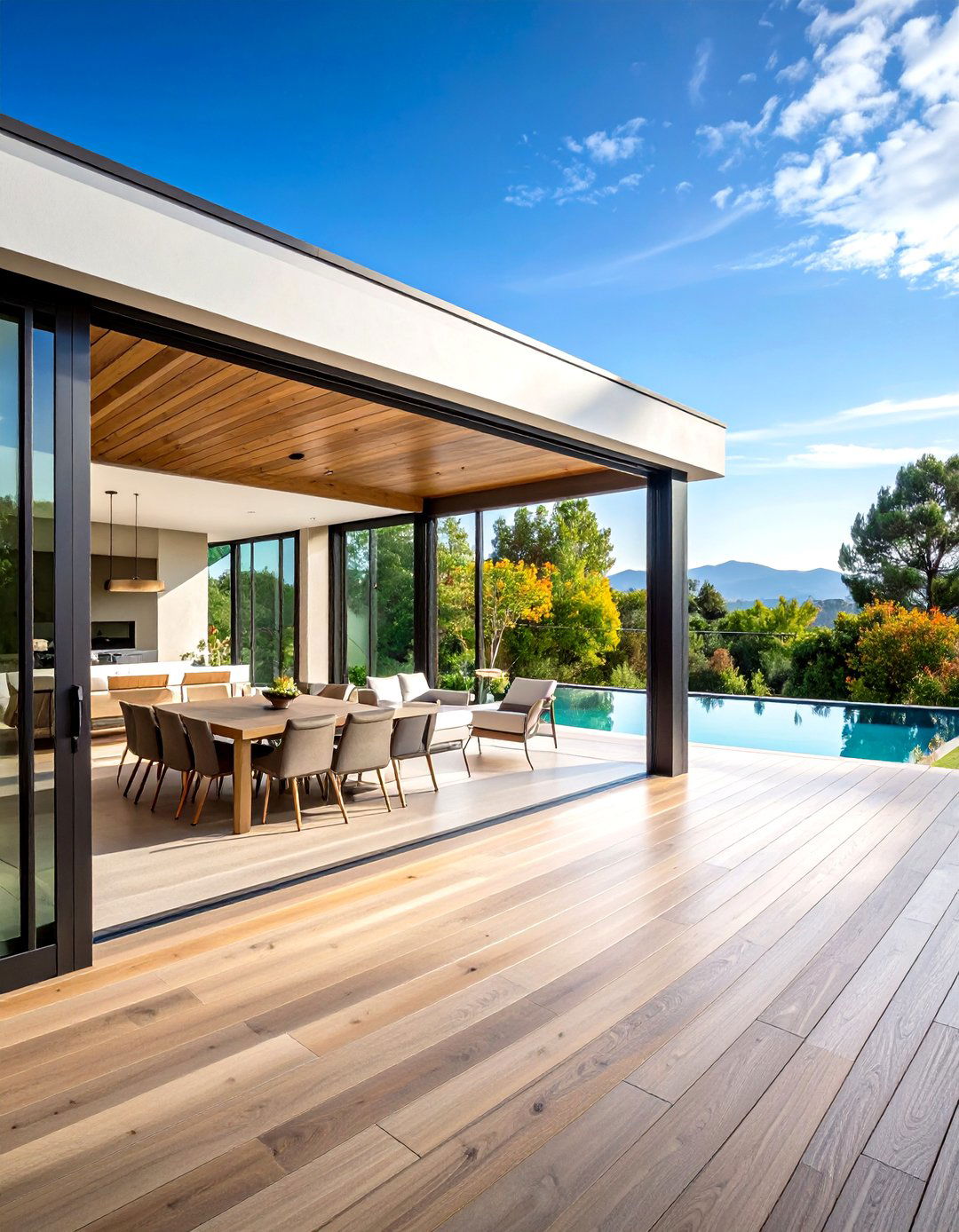
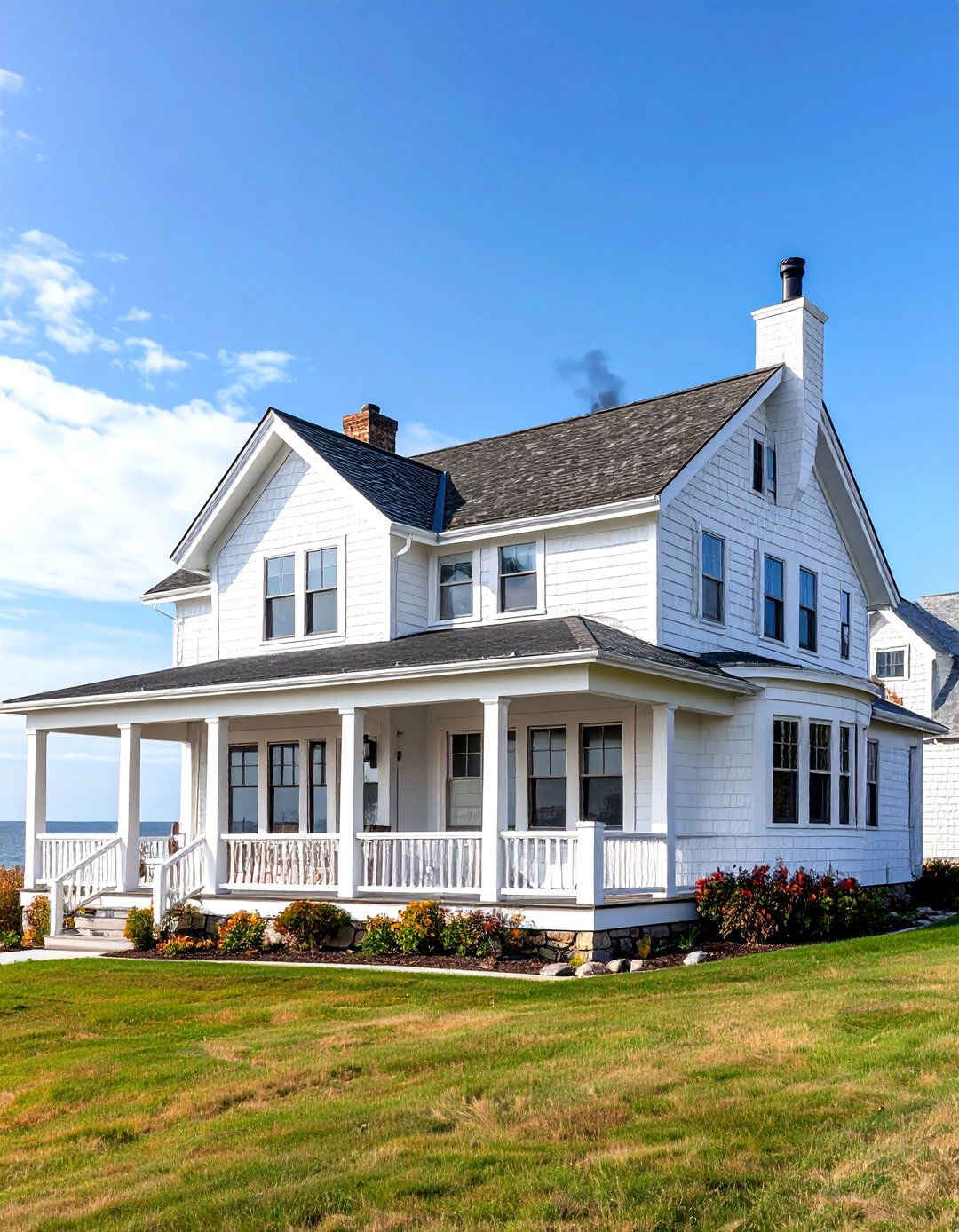
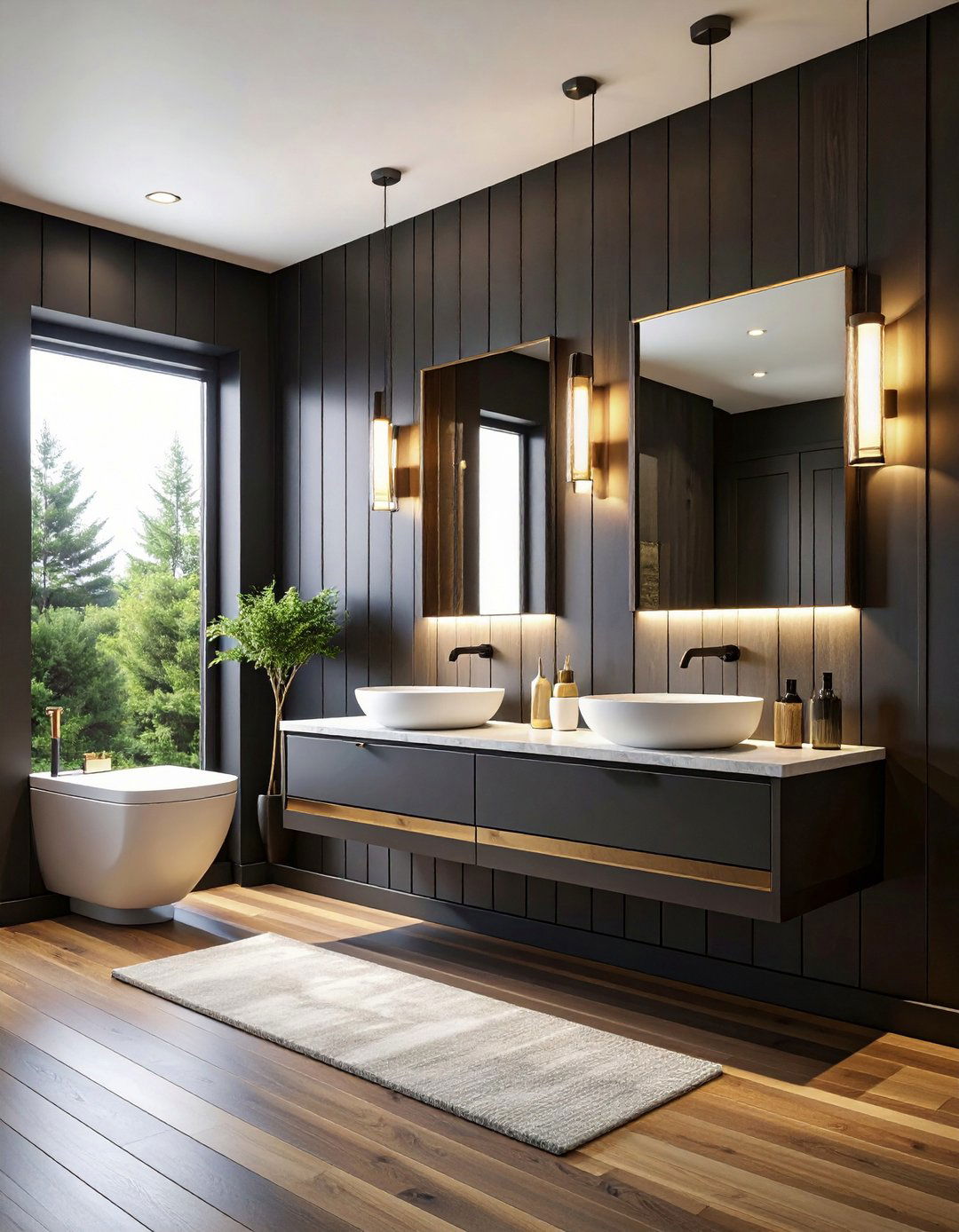
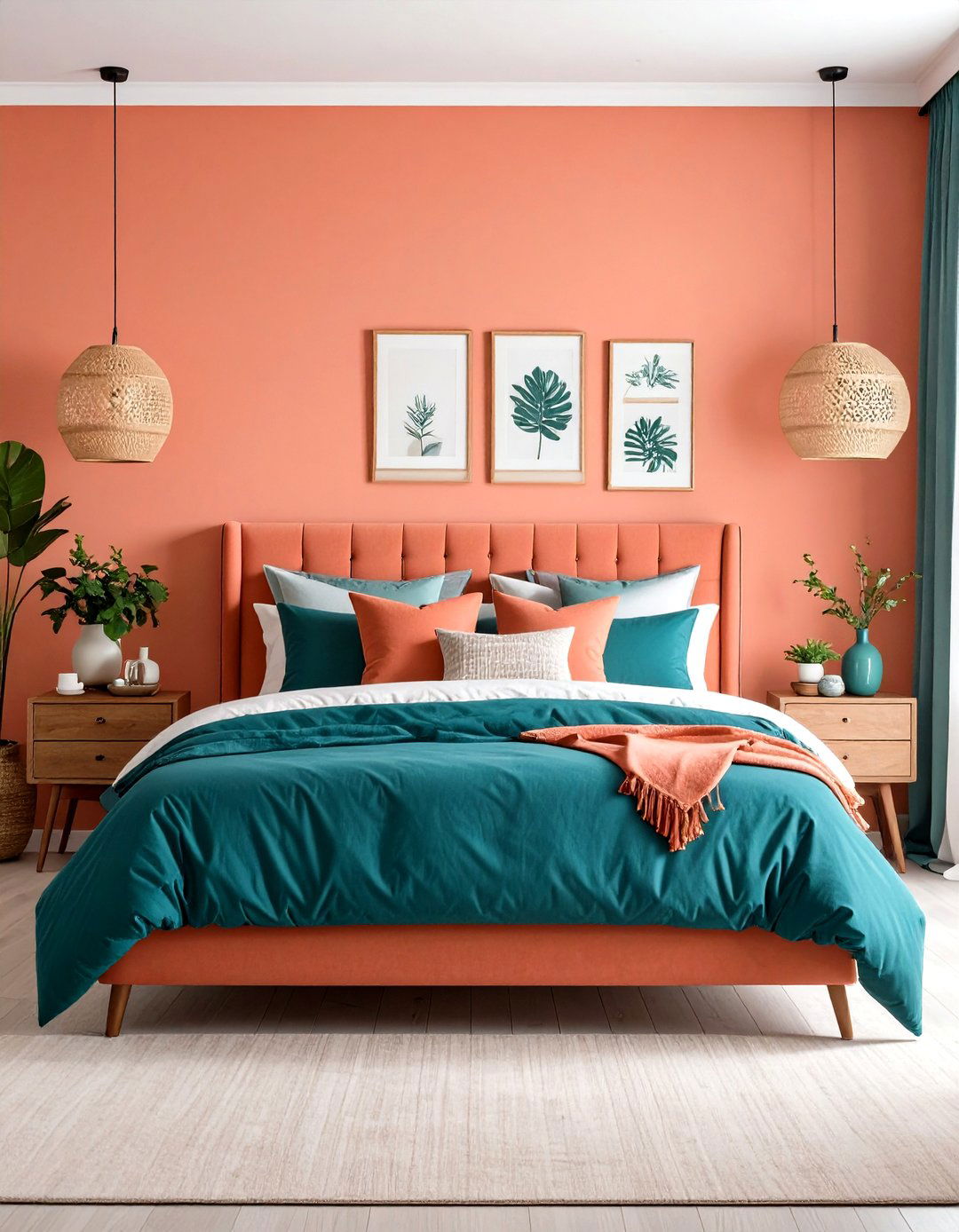
Leave a Reply